
Saturday 21st February From one trip to another
We worked more on the website before breakfast, then later in the morning, we took our luggage along to Albatros Hotel, where we are staying tonight, prior to our Antarctic trip.
This hotel is much grander than the humble but friendly one we have been staying in. We were pleased that we were able to go straight to our room, and delighted that we had a view out over the water.
We called in at the Quark office to check that everything was OK for our trip, following the running aground of ‘Clipper Adventurer’s’ sister ship, ‘Ocean Nova’ . They told us that all was OK.
We saw Nikki just as we left to walk out to get lunch, and saw one or two others too – it’s always nice to see people that you know when you walk around a distant town.
We ate toasted ham and cheese sandwiches for lunch, and drank a pleasant stout, before making our way to the ‘End of the world’ museum. This small museum had information on the native tribes who used to live here, and on the early voyagers, as well as a large collection of stuffed birds.
It had been a really beautiful day with warm sunshine when we got to the museum, but was raining hard when we came out. We walked back past the Yamana museum, but thought that one museum was enough for one day!
Back at our hotel, we located the spa pool, and had a short soak before doing more of the website.
We had a meal with the ‘stragglers’ – Nikki, Craig, Andreas, Nick, Yvonne, Dave and Roz (from the next group) at Tante Sara before saying goodbye yet again!
Sunday 22nd February Antarctica here we come.
We were woken by a very noisy car in the night, sounding like a siren, but Adrian was still up early finalizing the website. I drew the curtains back, and saw the ‘Clipper Adventurer’ just coming in to dock.
Not long afterwards, a huge cruise ship pulled up beside it, dwarfing it, and later another one, just as large.
We finished the website and sent the email, so were quite late for breakfast, which wasn’t too great – no attempt was made to clear the tables, and there was very little crockery left.
We looked out of our window, and saw our bags being loaded (thrown) onto the bus, to be taken to the boat. We walked out, and bought one or two things – a T shirt each, a neck warmer for Adrian, and a ring for me.
We came back to the hotel in time to meet Craig, who was joining us for lunch. While waiting in the lobby, an attractive young girl from the British Embassy in Buenos Aires got chatting to us. She had flown down to make sure that none of the passengers on the ‘Ocean Nova’ was in trouble (they weren’t). Suddenly the huge wall of luggage piled up beside us fell with a huge crash. Bags landed all around us, but none of us was hurt, just very startled. At that point Craig arrived.
As we walked out, we saw Rosita in the street below, so went down to meet the new group, and to say goodbye yet again to Nikki and Dave. We waved them off, then went to have a pleasant pizza lunch. Then, after walking down to the quay, it was finally goodbye to Craig, who is going on an Antarctic trip in a few days.
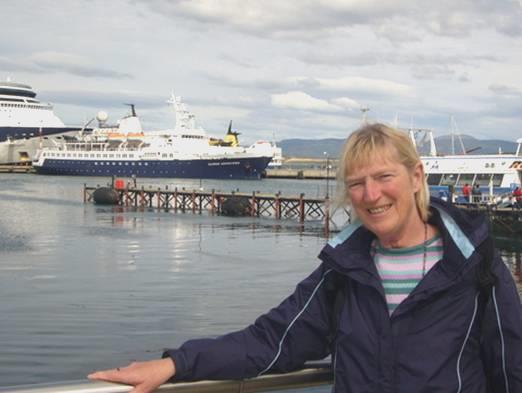
Rosie by the quay with Clipper Adventurer behind
Soon it was time to get the bus for the short distance to the boat, and then we were on board. We were welcomed with tea and cakes before going to our cabin.
No time to hang about – we had an introductory talk, and then a real lifeboat drill, all donning the lifejackets from our cabin, and going up on deck to the lifeboats.
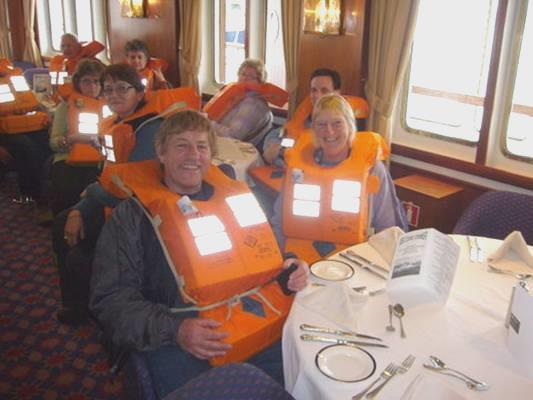
Lifeboat drill
The boat left Ushuaia at about 6.25, and we stood on the top deck watching the beautiful scenery until we were called down to a meeting to meet all the staff. After that, it was a glass of champagne, and the captain – Idar Petersen from the Faeroe Islands - joined us.
Then the ‘Welcome Dinner’, and we sat with a couple from Fairbanks, Alaska. He, of German descent, was called Claus, and looked just like Santa! We had also chatted to two couples from Cape Town and a couple originally from India.
We returned to our cabin to begin to unpack, but had to go back up to try on the large yellow jackets which we are being provided with. After getting ours, we walked back out on deck and looked at the stars in the sky – Orion and the Southern Cross. Just as we were coming in, there was an announcement that the pilot ship was now leaving us, so we watched that before coming back down to our cabin.
Monday 23rd February Drunken Drake Passage
It was a calm sea as we went to bed, but soon we must have reached the end of the Beagle Channel, and the going became rough, as we began crossing the Drake Passage! We had already put on patches, but took travel pills too, as the boat rocked and rolled. We decided that feeling OK was the most important thing, even if we were sleepy!
We went up for breakfast, seeing a lot of other people looking as though they were drunk too!
And so the day continued. We thought of the early voyagers and explorers, who, without travel sickness medication, had to man the boats, as well as just travel through the rough seas!
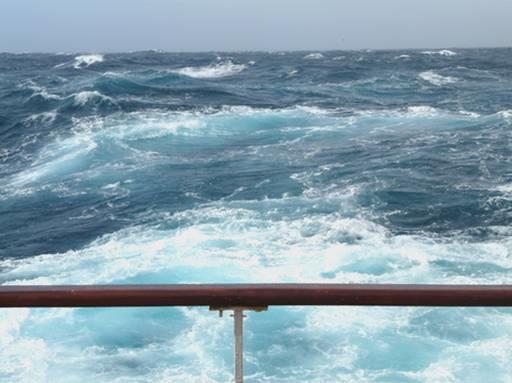
After breakfast there was a talk by ‘Birdie’ Dave on birds we might see, and then and excellent talk by Victoria on Shackleton.
After lunch, the talk by Wolfgang on geology was in-depth, and we dozed quite a lot!
The boat continued to rock and roll – we had been told that it was calm for the Drake Passage, but we didn’t think so! Many times glasses and things went crashing to the floor!
Before supper there was a short meeting, to start the daily ‘recap and briefing’. We ate supper with Venkat, a charismatic Indian/American, whose wife wasn’t feeling too well, as weren’t quite a lot of people.
Afterwards a video of Shackleton’s amazing expedition was shown – always a moving story!
Tuesday 24th February A drama to start to Shrove Tuesday
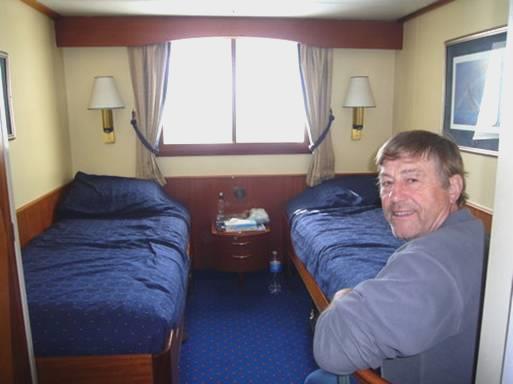
Our cabin in a calm moment
The long swells continued, making for great movement on the boat. We had crossed the Antarctic Convergence during the night, meaning that we were now in the Southern Ocean, with subsequent lower temperatures for both air and sea.
I had got up at 7.00 am, and showered, although the Expedition leader said later not to shower this morning, as the waves were so large.
We were eating our pancake breakfast – being Pancake Day – when there was an announcement over the loudspeaker system, asking if anyone had lost their yellow parka (these had been issued to us all on Day 1.)
It was then announced that the boat would be making a complete circle, with consequent movement on the boat. Everyone was puzzled for a while. It was then announced that there would be a roll call of all passengers and crew in their muster stations.
The staff were all excellent, and calm, although you could detect an underlying tone of worry.
Everybody was accounted for, and later we were told that ‘birdie Dave’ had been observing from the stern, and had been joined by crewman Alex, who had spotted a yellow jacket in the sea. Hence the follow up checks. All was well, but it had been rather unnerving – for passengers and staff.
This morning’s geology talk was more interesting than yesterday’s, especially when Wolfgang demonstrated the timeline of the earth by winding wool all around the room 3 times, the last millimetre of which indicated man on earth.
Victoria then gave an excellent talk on the amazing but little known Antarctic expedition of Swedishman Otto Nordenskjold in 1901-3.
After lunch, we were briefed on the Zodiac landings, which will start tomorrow, and all went to have welly boot fittings.
The next talk was on penguins, and time rushed on, until it was time to be briefed on tomorrow’s landings – hopefully on Half MoonIsland and Deception Island. We shared a ‘Drake’s Shake’ cocktail while listening to this.
We sat with Claus and Dinah for supper, before watching a delightful film ‘The Cry of the penguins’, starring a very young John Hurt and Hayley Mills.
We’d been told that we would be approaching land after 10.30, so dressed up and made our way to the deck, but could see nothing, and it was VERY windy!
Wednesday 25th February Disappointment Day
When I woke at 6.30, I looked out and saw land – dark rocks covered by thick snow. It was still windy – the boat had travelled slowly, so that we would arrive near land in the light. We both went on deck to watch our approach, and, along with other passengers and the crew, were disappointed that it was too windy to land on Half Moon Island. We had views of islands all around, plus some small iridescent icebergs.
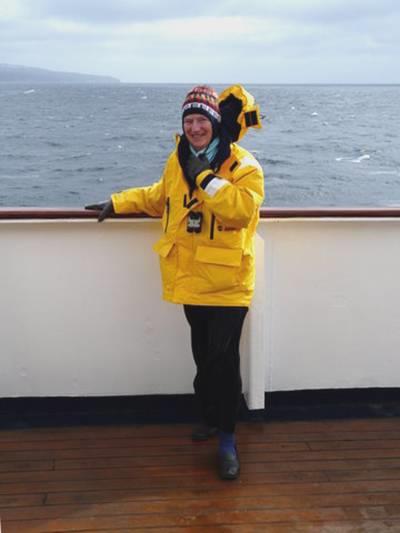
Near Half Moon Island, but too windy to land
We travelled on to Deception Island, which was to have been our second land fall. On the way, Laurie gave a talk on wind speeds and measurements – we had been in gale force 8 for most of the way from Ushuaia.
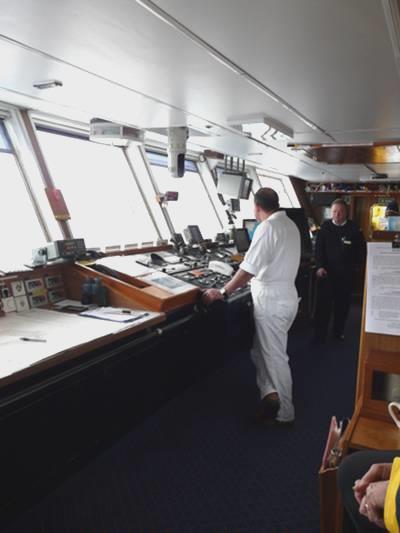
On the Bridge
As we approached Deception Island, we had joined many other people on the bridge, but as we neared Neptune’s Bellows – the small and hidden entrance to the large caldera which is Deception island – Laurie asked everyone to leave, except the crew. It is always a difficult manoeuvre to negotiate the ‘gap’, and was even more so today. Laurie said that he had never known it so wild.
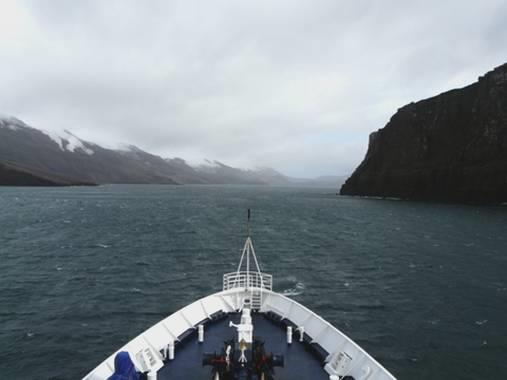
Entering ‘Neptunes Bellows’ at Deception Island, South Shetlands
We passed through the gap, and went further into the circular caldera, during which time lunch was served. The boat then returned to the entrance, but sadly there was no way that we could land at Whalers Bay today. We could see the derelict buildings from the whaling era, and on the other side, the hull of a wrecked ship. Seals and penguins were scattered along the dark shore.
Reluctantly, we headed for the Antarctic peninsula.
The talk in the afternoon was on whales and dolphins, which just left us confused about the differences!
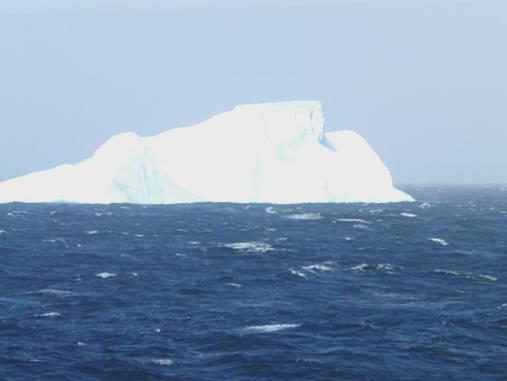
We passed several icebergs, looking lit up, in their brilliance.
I had just prepared to have a shower, when we found that there was no electric supply! They worked quickly on that, and at 5 o’clock, I went for a birthday present massage, but at that moment, it was announced that there would be a talk on photography.Adrian went to that, while I had my massage from the Filipino physio, who also runs the little on board tourist shop
We had the usual briefing, when we all just hoped for calmer weather. After dinner, Adrian came back to the cabin, and I arrived to find two huge birthday balloons!
The film tonight was ‘March of the penguins’, which we had seen on the flight over, but still watched again, as we had dozed through some of it before.
Thursday 26th February What an exciting day for my birthday!
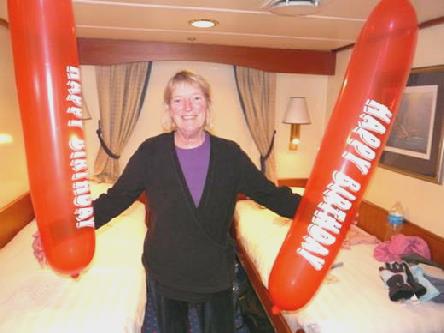
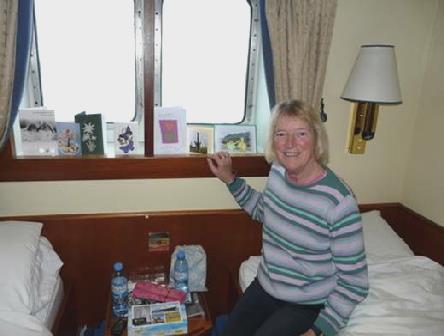
I woke early, and looked out to icebergs, and to a calm sea! Wonderful!
I opened my birthday cards and presents – most of them I’d opened before we left England, but I had a pretty bracelet from Emma, which just matched the jumper that I was wearing. Adrian had got me 2 CDs that I’d wanted – Glen Campbell and Column Sands – and the ring from Ushuaia.
As we walked into the dining room for breakfast, Rose and another Chinese friend sang me a Happy birthday song in Chinese.
The really exciting thing was that today was our first shore landing – at Hope Bay, also called Esperanza, on the Antarctic Peninsula.
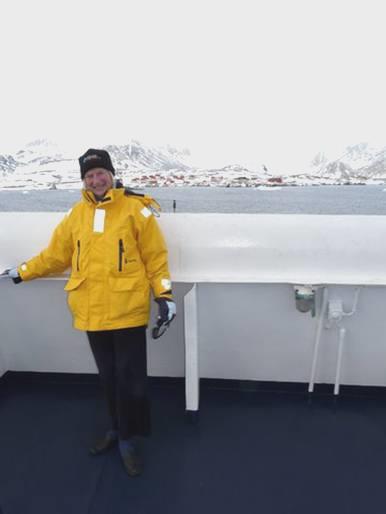
Arriving at Hope Bay for our first Antarctic landing
I was really excited as we donned all our warm gear and wellies, then life jackets, and got into the zodiacs to be transported to land.
The colours were stunning – it was like an old sepia photo which had been tinted. The land was dark grey/brown, with the white of the snow, and the blue of the icebergs. The buildings were all a bright scarlet, with mustard colour at the bottom, and we were all clad in bright yellow.
Hundreds of penguins reside here, but most have returned to the sea by now. Still, it was lovely to see the small gathering of Gentoo and Adelie penguins, and a solitary fur seal. Maybe it was the same one that popped up as our zodiac left Hope Bay to return to the ship.
We saw sheathbills, kelp gulls and Wilson’s storm petrels, which almost walk on the water as they skim over it.
We saw the stone hut which 3 of Nordenskjold’s party had spent a winter in. We saw the tiny church of St Francis of Assisi, a small museum, and the ‘casino’ (just a meeting place). In here, we posted a postcard (at great expense) and had ‘elevenses’.
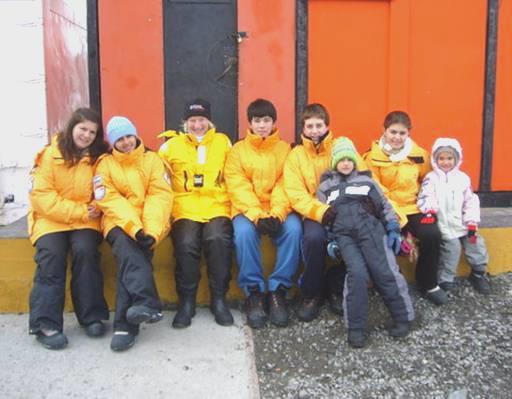
There is a school here, and I had my photo taken with a group of happy looking children.
We wandered around the rocky, snowy area, taking in the unreal atmosphere.
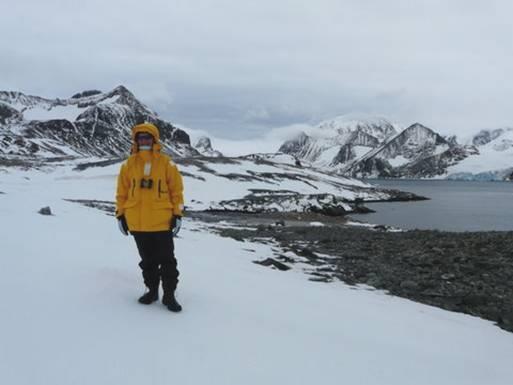
Rosie at Hope Bay
It felt strange to be with a large group of people, and in a settlement, for our first experience of Antarctica, but this couldn’t detract from my excitement of being here on my birthday!
Having had a good look around, it was time to return to the ship. Our zodiac driver took us up really close to a superb blue iceberg. By 11.30, we were back on board, and removing all our gear.
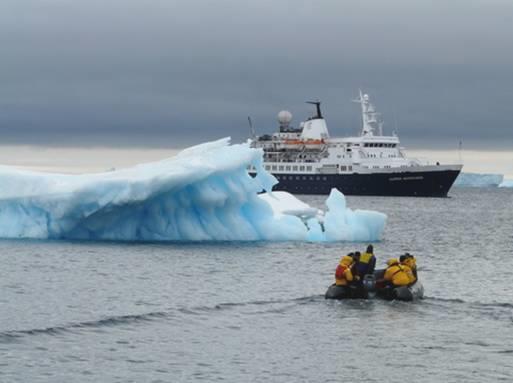
Back to the ship, past wonderful icebergs
We tried to eat lunch as quickly as we could, so that we could look out at all the wonderful icebergs that we were passing. A leopard seal was reclining on one.
Soon we arrived at Brown Bluff – an area of stunning scenery. We were amongst the first to go by Zodiac to the beach. Once there, we were greeted by dozens of penguins – mostly Gentoo, with a couple of Adelie.
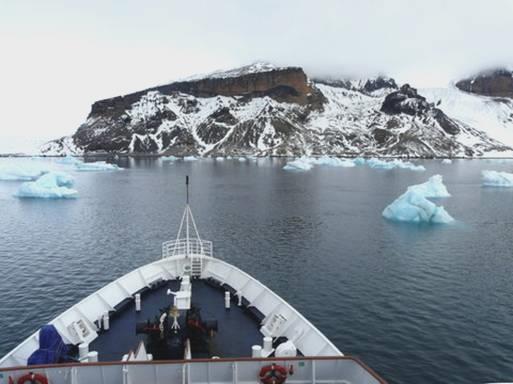
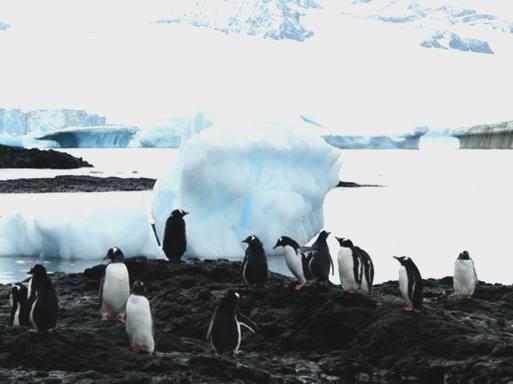
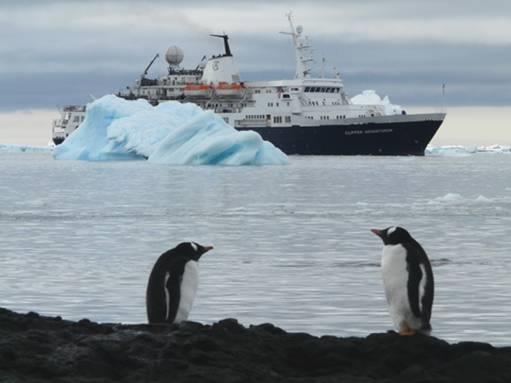
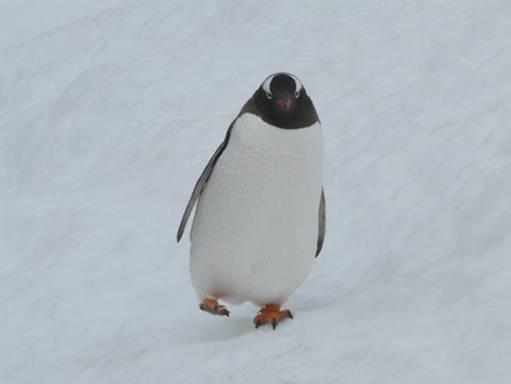
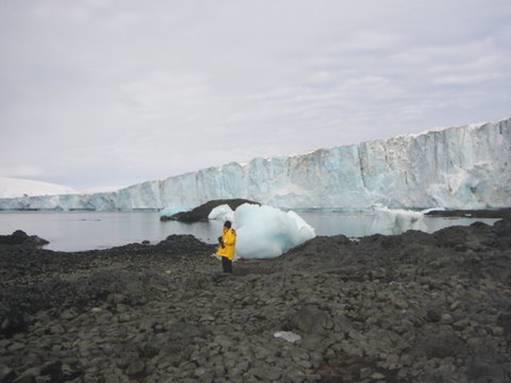
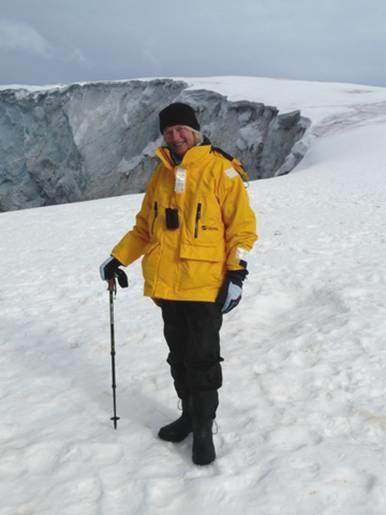
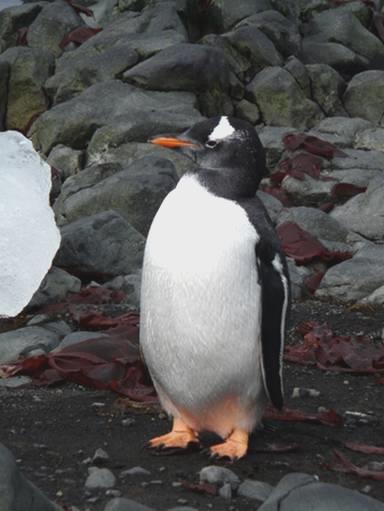
Various aspects of Brown Bluff
Earlier in the season, there would have been far more penguins, but most had left for the sea. We just enjoyed viewing them – you can’t help but smile when you see them walking like funny little men, with arms outstretched.
There were lots of fur seals too, and a few birds, like pretty Cape petrels, to watch.
Some people went on a steep walk to the glacier, but we found a nice walk along the beach, and ended up at the glacier anyway. The view and the lighting were stunning. Photographer Dave, who steered our Zodiac back to the ship, said he’d rarely seen it as good as this. The small icebergs on the beach were fantastic, and the views to sea changed constantly with the lighting. It was a magical visit.
Dave took us on a tour of the icebergs on our way back to the boat.
Next came another memorable thing – the ‘Polar Plunge’. Those that wanted to, jumped into the icy sea, waving to the onlookers. I had a go – putting on the wet harness was not much fun. After that, you just had to go for it – it wasn’t long enough to feel how cold it was! I was glad to be one of the first to go, so I didn’t have too long to think about it!
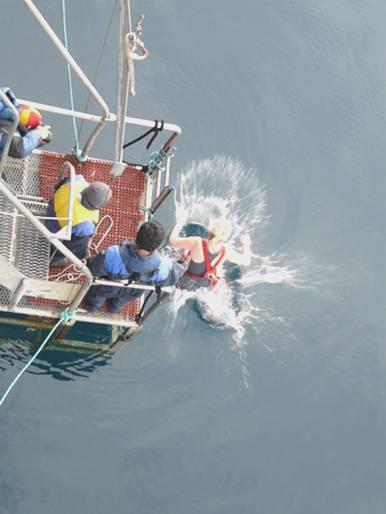
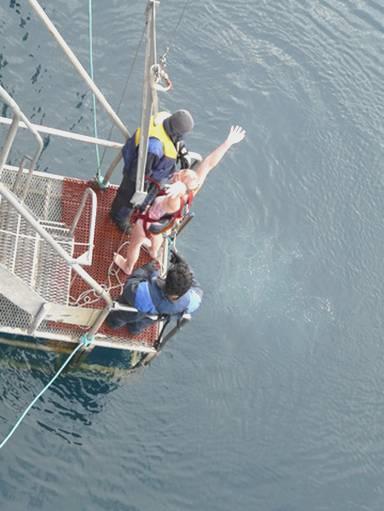
Rosie jumping into the -2°C water!
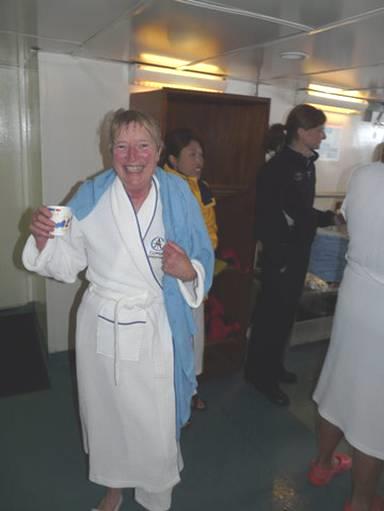
We were warmed afterwards with a drop of vodka!
We were all called on deck to watch the ship going through an area of icebergs, and then a whole area of flat ice.
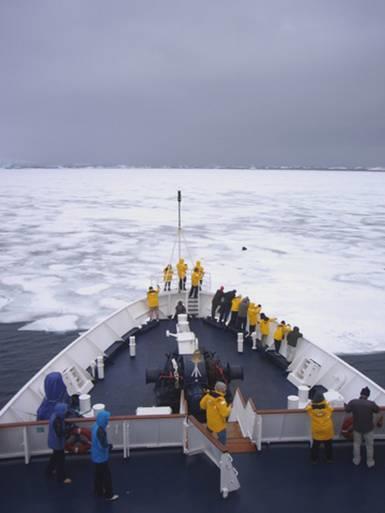
About to enter a huge area of sea ice
Although not an icebreaker, the captain started guiding the ship through the ice. We looked down to see the cracks in the ice as the boat forged a way through. After some distance, the boat stopped, and we had visions of being stuck, like Shackleton.
They managed to reverse out of the situation, and we then followed a different route.
We all met in the lounge for a glass of bubbly to celebrate reaching the final continent. At suppertime we sat with Dinah and Claus and 3 other Americans.
The dining staff came in with a birthday cake for me, complete with candles, and they sang Happy Birthday. The cake was divided up between all on the table, and to Rose and friends – she had given us some of hers 2 days ago.
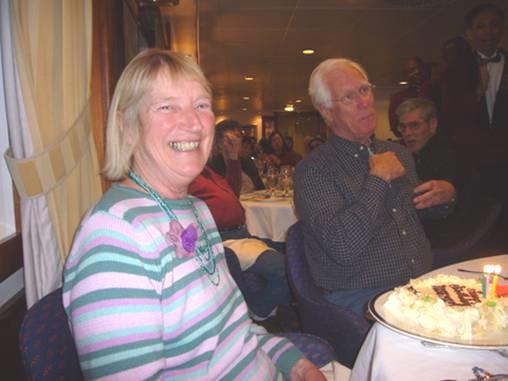
Happy Birthday!
The film tonight was Moby Dick. It wouldn’t be my choice of a film to watch on my birthday, despite the connection with Herman Melville. By the end of the film, only a few stalwarts remained!
All in all, it had been a great and memorable birthday.
Friday 27th February More penguins and fur seals
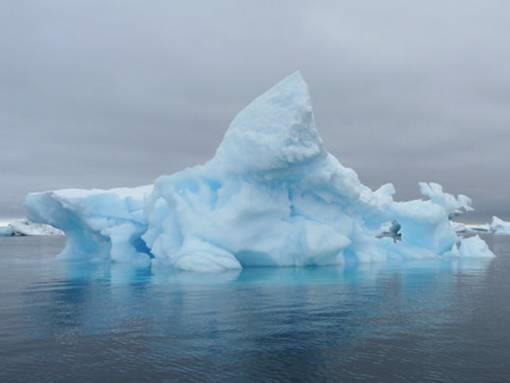
There were icebergs all around when I looked out at 6 o’clock. We’d just started eating breakfast when there was an announcement that there was a group of orcas just ahead of the boat. Hence breakfast was rather a disturbed affair, as everybody went on deck to watch this apparently rare sight.
This morning’s visit was to Devil Island. There were a lot of Adelie penguins, and several fur seals. Some people climbed to the two peaks, but we just climbed up (through areas of penguin poo, snow and rocks) to the ‘saddle’.
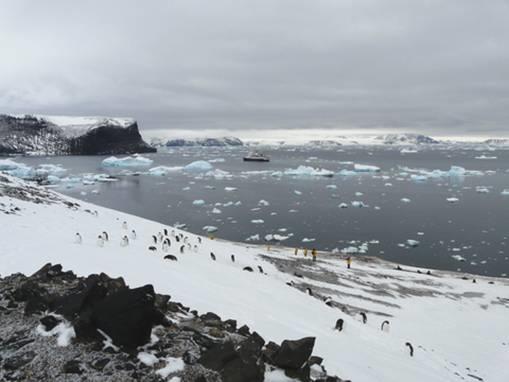
Adelie penguins on Devil Island
From here we could look out over the lead grey water, scattered with icebergs of every shape and size, some white, some blue.
Having taken in the view, we returned to the zodiac, and were given a cruise through the icebergs, stopping to walk on a flat ice flow.
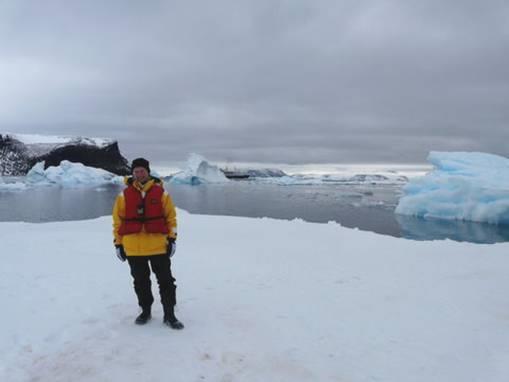
Rosie standing on a flat ice flow
Back on board it was soon time for lunch. Once more there was an announcement of orcas in front of the ship, and of minke whales to the side, so again the meal was interrupted, although I didn’t really see anything. We sat with Mike and Elaine from Alexandria US.
Later in the afternoon we reached Paulet Island, and all went ashore. This is where Larson, on Nordenskjold’s expedition, was forced to overwinter with 29 men, after their ship had sunk. The ruins of the building are still here – they had built it with stones from the beach.
Also on this island were more fur seals, blue eyed shags, Adelie penguins and sheathbills.
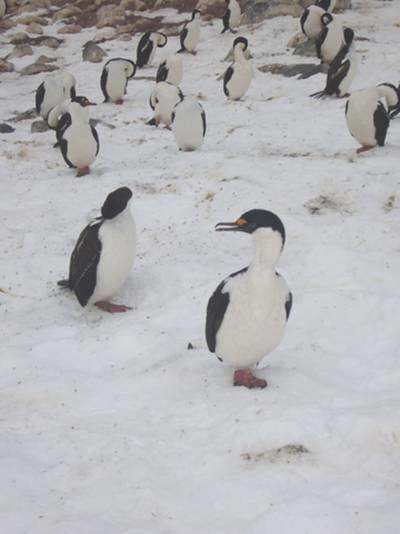
Blue eyed cormorants
There were two walks available, but both had set off before we arrived. We started off on the shorter walk, but I soon realized that it wasn’t for me, so returned to the beach area. Adrian continued, but it all seemed a bit disorganized. There was a fresh water lake here too, but the overriding thing was the guano – the penguin poo - which was pink and thick!
The smell of this permeated the air after our return to the boat.
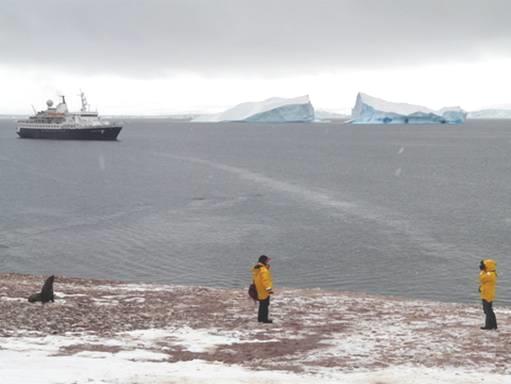
Pink penguin poo beach! Paulet Island
The meal this evening was an ‘International buffet’. We had some wine left from last night, but it hadn’t been chilled. When we pointed this out, we were brought another 2 glasses of wine! We sat with Rose, and chatted about our Tucan trip.
When we looked out on deck at bedtime, it was snowing heavily.
Saturday 28th February A day of whales
This was a sailing day, but we were still awake early. We were passing a lot of large icebergs. Laurie announced at 7.45 that there was a group of fin whales ahead of the ship, so we dressed up, and went to watch. There were lots of them, and they looked good with a large blue iceberg behind them.
Later in the morning, we were called to see another group of fin whales. These were really close to the ship, so it was exciting, but bitingly cold, especially right at the bow of the ship, where I spent some time. It was snowing hard too.
Laurie gave a talk on Scottish explorer/scientist William Spiers Bruce, who had set up a research station on Laurie Island in the South Orkneys in 1903. We hope to visit the island tomorrow.
We were looking forward to the talk on Plate tectonics, which interests us both, but Wolfgang’s presentation was hard to listen to.
Just before lunch, there was an announcement that Birdie David had a Wilson’s Storm Petrel, which had been found on the ship. He was holding it in his hand, so I had a good look. It has little webbed feet, with which it ‘walks’ on the water. He let it fly off after we’d seen and photographed it.
During the afternoon, we went on deck to watch another group of whales just ahead of the ship – these, it seemed, were sei whales, not expected in this area.
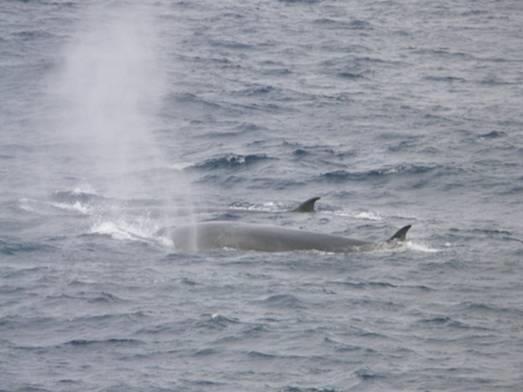
Sei whales passing the ship
After the afternoon ‘recap’ meeting, when several of the staff added footnotes to previous talks, we were again told of whales up really close to the ship – possibly these were the same group of sei whales. Later we could see some from our cabin window.
Sunday 1st March The oldest scientific base in the Antarctic
We woke early to see a glassy sea, the rocky peaks of the South Orkney Islands and icebergs of all shapes and sizes. Cormorants and penguins were swimming by, it was just beautiful. We went on deck before breakfast, as we approached Laurie Island, where we were going to go ashore. We passed by a conical rock, named Ailsa Craig, after a similar one in Scotland.
We were visiting Orcadas Base, a research station run by the Argentineans since 1904, but established by Scotsman Bruce the year before.
There was a small museum here, and we went into one of the base buildings, but it was the setting and the wildlife that were really interesting.
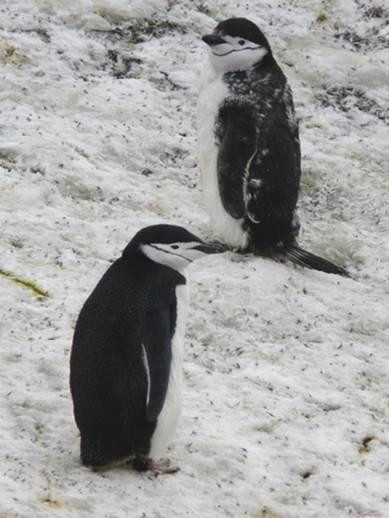
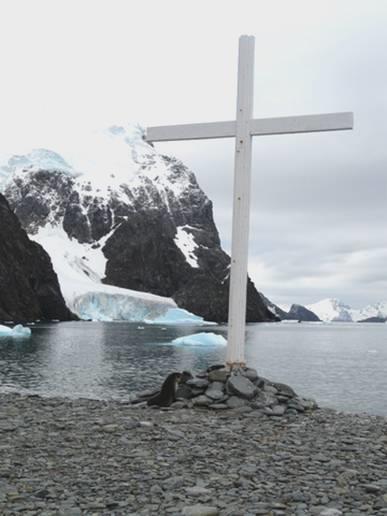
On Laurie Island, South Orkneys
The penguins here were chinstrap penguins, aptly named, with a thin black stripe under their chin. There were plenty of fur seals too, and just one or two gentoo penguins. There were evocative looking crosses, huge glaciers, and great scenery. Also there was moss growing on the ground, and lichen on the rocks – something new to see. On our way back in the zodiac, a giant petrel flew directly overhead.
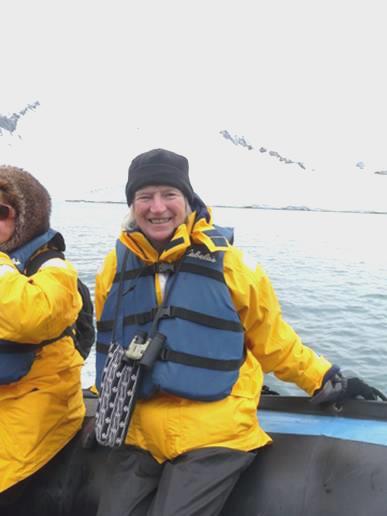
Travelling back to the ship from Laurie Island
We went almost immediately on deck, as we were passing through a wonderful area of icebergs as we travelled on. The sun was shining on some, and there were all shapes and sizes – one was an amazing green, black and white.
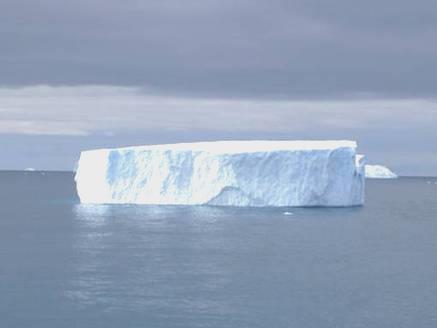
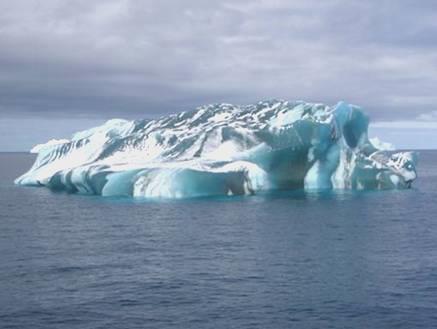
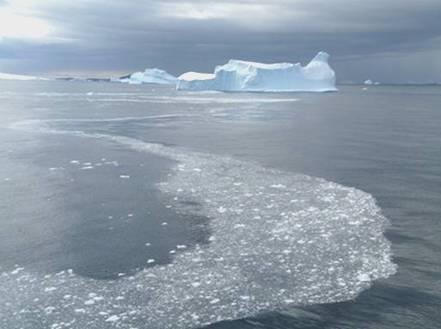
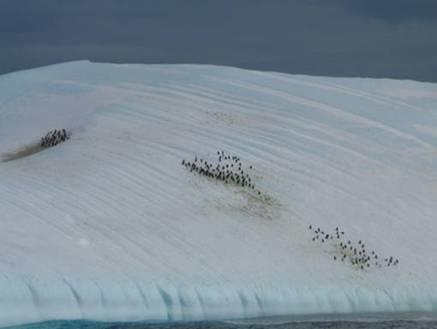
All sorts of icebergs – those are penguin colonies!
After lunch, we had a talk on the biosecurity measures taken for people visiting South Georgia, and after that, we all had to have the things checked and vacuumed that we would be taking ashore.
The sea now was shining like glass, with icebergs in the distance. For a short while I sat on deck at the rear of the ship, enjoying the sun.
The talk this afternoon was on albatrosses, which we hope to see.
During the ‘recap’ meeting, those of us who had jumped into the sea were presented with our certificates.
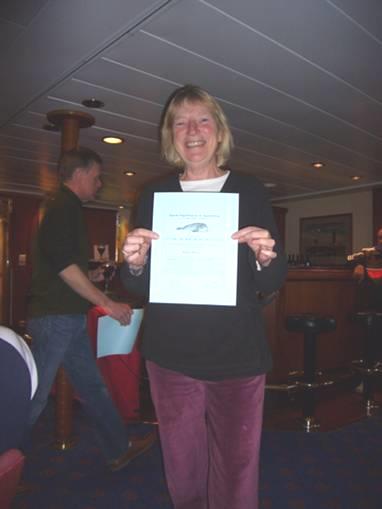
Monday 2nd March A day of lectures at sea
The sea was much rougher when we looked out this morning, and the day remained cloudy and dull. There was no incentive to go on deck – no icebergs, no wildlife, and dismal weather.
There were several lectures arranged for today – on snow crystals, South Georgia, eradication of rats, and on photography.
At lunch we sat with John and Frances from Auckland, NZ, and for supper we sat with David and Dawn from South Africa, but living in England.
The recap meeting prepared us for tomorrow’s planned visit to South Georgia.
We started listening again to Shackleton’s Endeavour adventure.
Tuesday 3rd March Heaven on earth in South Georgia
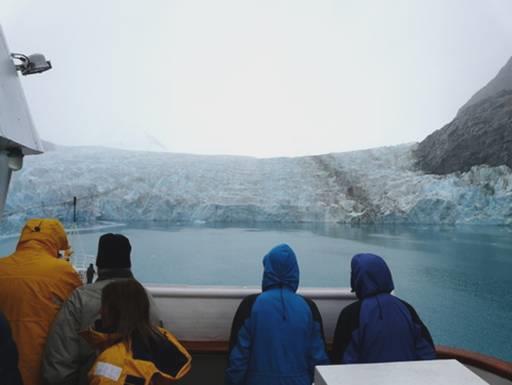
Risting Glacier, Drygalski Fjord
We were up at 6.00am so that we could look out at the Drygalski Fjord as we travelled up it, right to the Risting Glacier at the end. The weather was foggy, with rain/snow, but the scenery was amazing. There were steep sided cliffs on either side of us – one side had been part of Gondwana, and the other side part of the ancient sea bed. Both were stark, and there were a lot of glaciers.
Penguins entertained us as they swam along beside the boat – macaroni penguins, King and gentoo. There were plenty of other birds – albatrosses and petrels, including the snow petrel. A diving petrel had come aboard the boat, so we had a good look at it.
After reaching the end of the fjord, the boat turned around, and we went to have breakfast. Once back at the sea, we rounded Cooper Island, and anchored off Cooper Bay. We were told that the landing here could be rough, but in fact it was OK. Macaroni penguins breed here, but there were also gentoo penguins. Young fur seals were everywhere. After landing, we climbed up a very steep cliffside, following a small stream. There were small mounds of earth (looking like seals) and tufts of tussock grass. The going was quite difficult. We managed to walk along above the macaroni penguins, and between the fur seals. Skuas often landed right close to us.
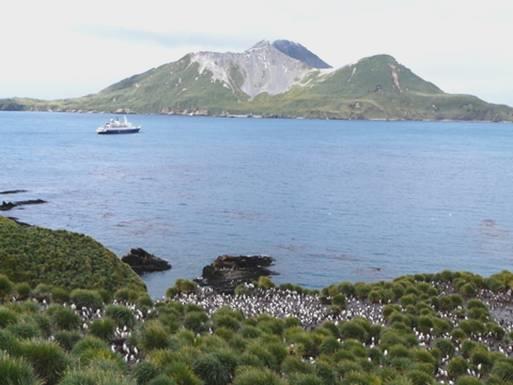
Macaroni penguins at Cooper Bay, South Georgia
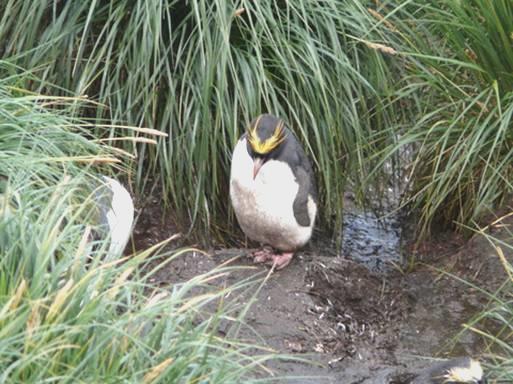
We descended to the beach area, and were lucky enough to get into a zodiac which was taking people along the shoreline, so we came close to a second beach. There were a lot of King penguins here and also elephant seals.
We also saw both northern and southern giant petrels (feeding together on the water). Bird photographer David was steering the zodiac. We saw a small bird, and followed its course. On asking ‘Birdie’ Dave, we found that it was the South Georgia pipit. This bird has been wiped out of most of South Georgia by the presence of rats, and is only on some of the islands, so it was a real bonus to have seen it.
South Georgia is more colourful than Antarctica, with grass and moss giving a welcome shade of green.
The afternoon landing was the most magical yet. Called Gold Harbour, there were sharp green peaks all around, wonderful huge Weddell Glacier and penguins like a dream!
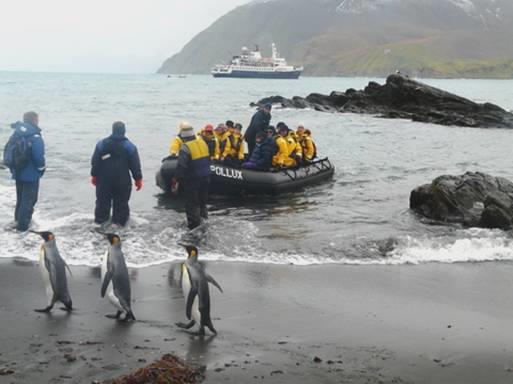
Arriving at Gold Harbour
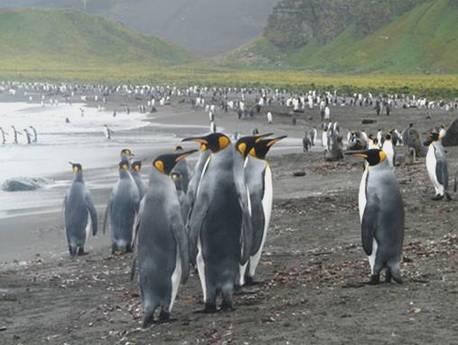
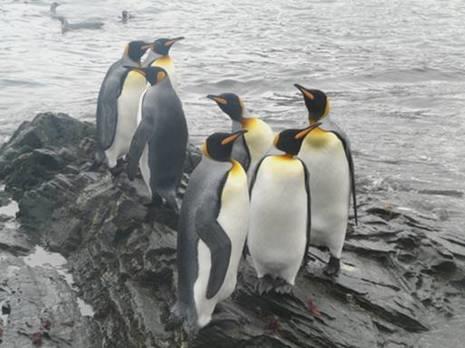
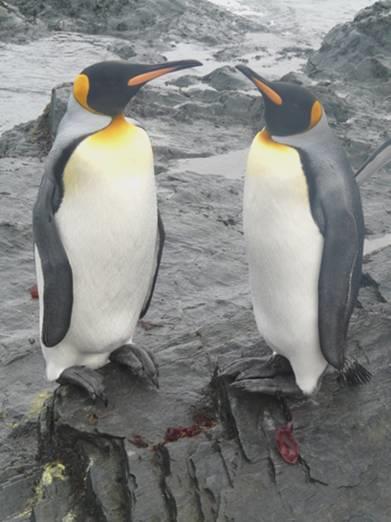
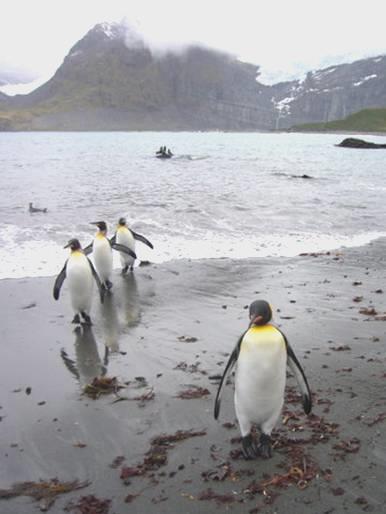
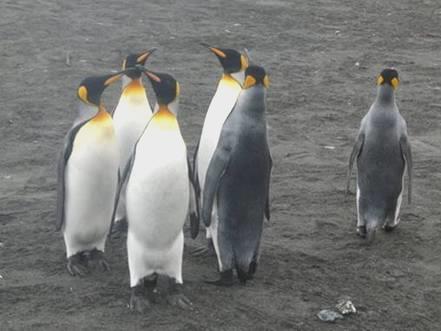
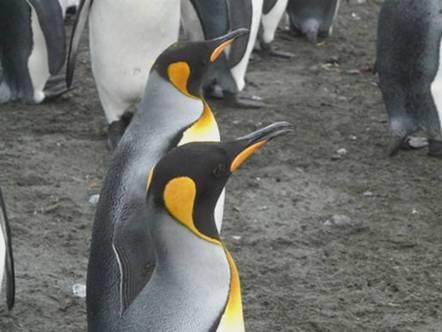
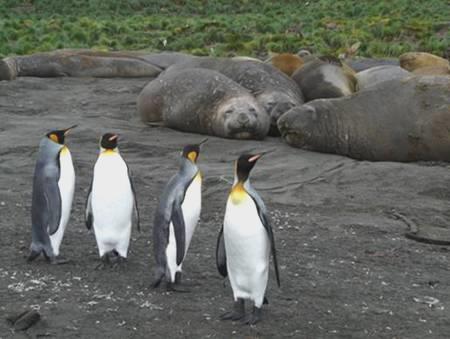
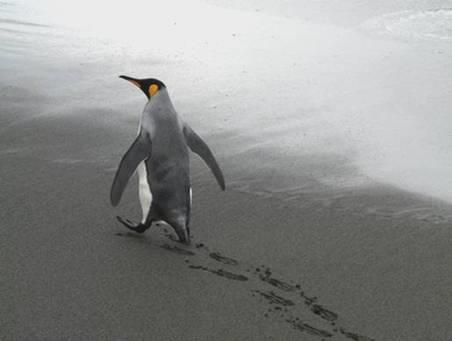
Our own March of the penguins, Gold Harbour, South Georgia
Also on the beach were fur seals and elephant seals. These could never be called pretty – in fact they are just huge and ugly – but it was still good to see them. There were birds too – sheath bills and petrels.
Having taken in the fabulous scene, and taken far more photos than intended, we set off with some of the group for a walk. This was tough going, through the hummocky tussocks and the pebbly stream.
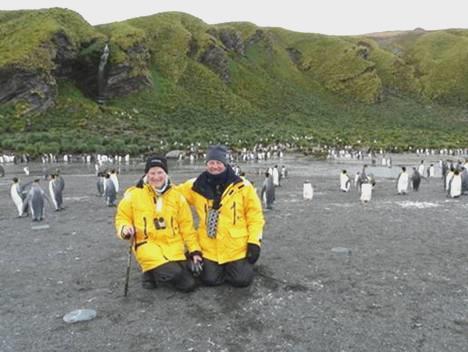
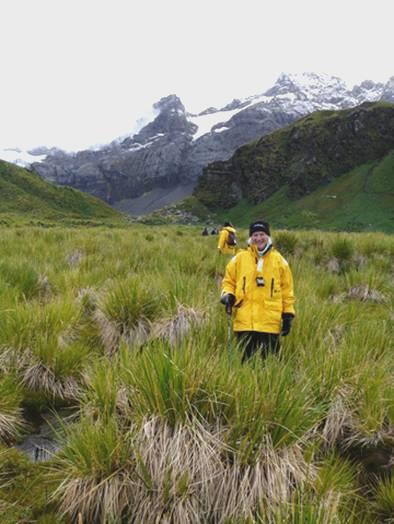
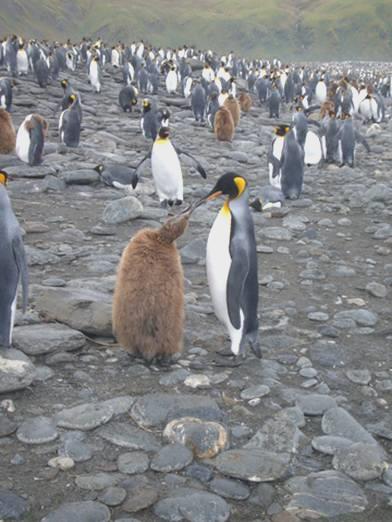
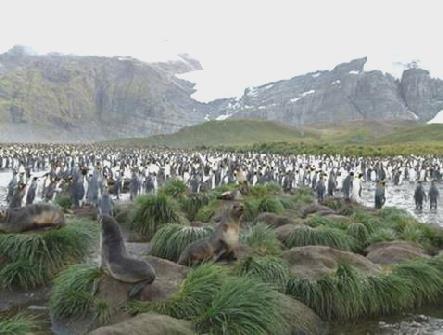
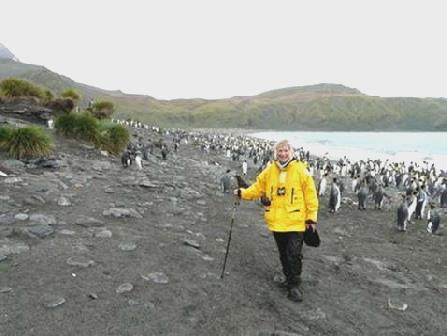
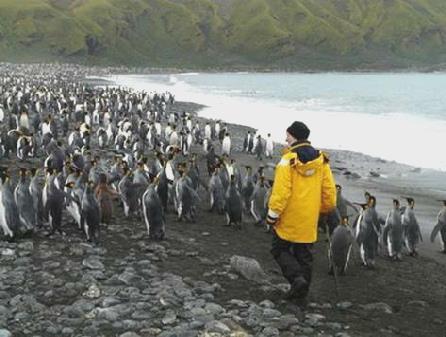
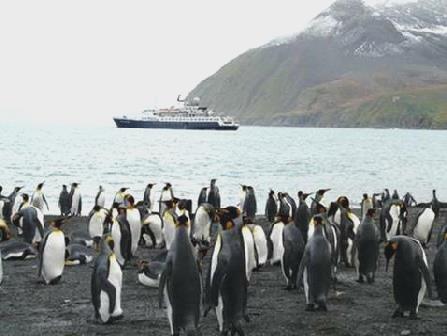
More Gold Harbour penguins
We came to a view over a fresh water lake, and beyond that the gigantic glacier flowing into the sea. Laurie was walking on around the lake, but we made a shorter walk around the near side of the lake. The problem with this was that fur seals were hiding in all sorts of places amongst the tussocks. Also, we ended up with a very steep climb down to the beach. We were on our own, and managed to accomplish it. After that, it was just a very long walk back along the beach amongst the hundreds of penguins, the fur seals and the elephant seals.
At suppertime we sat with Al and Linda from Houston, Texas.
We walked around the boat afterwards and saw a small bird on the deck. On walking back, we saw Birdie Dave and David, with another bird found on deck! These were both diving petrels, but different from this mornings. That was a common diving petrel, and these were South Georgia petrels. Both sorts had blue legs, but the common petrel had a line on the leg.
We had travelled on to Royal Bay, where we were anchoring for the night.
Wednesday 4th March More South Georgia delights
Up early, as we should have been landing here at Moltke harbour in Royal Bay, and it was our group’s turn to be first into the zodiacs. It began snowing heavily, and horizontally, but Laurie announced that we still hoped to land. We were still at breakfast with Venkat and Bette, when it was announced that we should be ready in 15 minutes. We got ourselves all togged up, and waited. Victoria was back, checking the loading into the zodiacs, after being off duty yesterday with a bad back. We stood waiting for a long while, but disappointingly, the staff crew couldn’t find anywhere calm enough to land, so we had to go back and remove all our outdoor gear.
As the weather remained rough, Laurie gave a talk on icebreaker ships as we journeyed northwards past St Andrews Bay, where we weren’t able to stop. We continued to Godhul, an enclosed inlet, where the water was calm. This had been a Norwegian whaling place, with a floating factory ship. We went on deck to watch our arrival, and once anchored, enjoyed a barbecue lunch, but sitting in the dining room.
The afternoon became an absolute winner! The water in the almost circular bay was like a millpond, and the weather became sunny and almost warm! We were on the first Zodiac to land – a tiny fur seal was there to greet us! Young fur seals littered the beach, along with huge bones from the former whaling station. We set off fairly soon on one of Laurie’s walks. We had to climb up over very rough tussocks of grass, through thick, muddy ground. Once we’d mastered this difficult part, we came out to a flatter, marshy area. Laurie intended walking further – up to the top of another peak, but we took a shorter route, along with a lady called Lois from Memphis, Tennessee. We walked around a pond, watching dozens of reindeer rushing past.
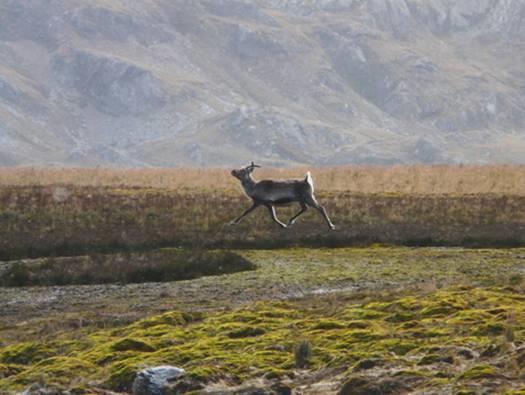
A reindeer runs by, Godhul, South Georgia
Reindeer had been introduced here in the early 1900s, and are now quite prolific. We also saw a large white giant petrel land. Having negotiated the lake, we had to make our way back to the beach. We hoped that it wouldn’t be too steep, but we were in luck. The last part wound down through a ‘cloof’, which was home to a whole group of gentoo penguins. We followed the stream down, and were sorry to be disturbing the penguins.
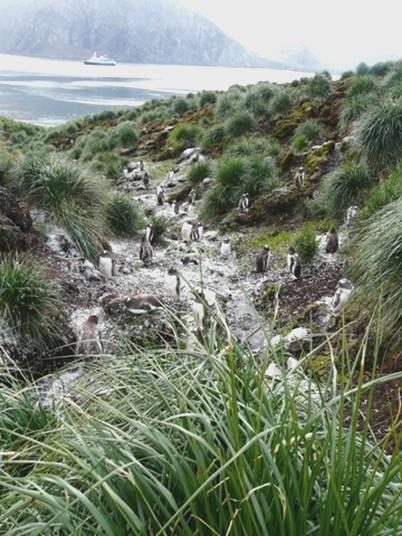
We had to walk down through the Gentoo penguins
Once back on the beach, we enjoyed walking along and viewing the remains of the former whaling activities –two derelict old boats, and bits of old shed. The fur seals were very appealing, along with the gentoos and a few immature king penguins. There were also elephant seals and one or two cormorants.
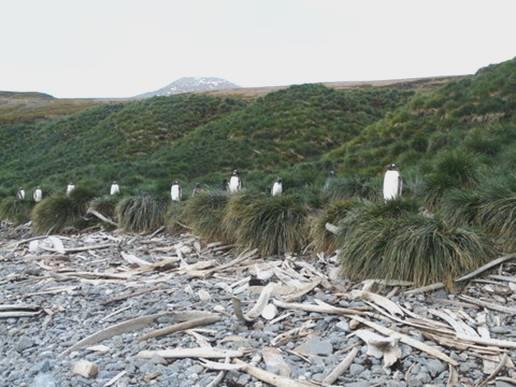
Penguins stand guard of the whale bones on the beach
Before going back to the ship, we were taken by Zodiac to a pretty little area at the end of the bay. A stream made a nice little waterfall from the barren cirque above. There were more seals here, also a cormorant and a lone chinstrap penguin. Terns dived for fish, and petrels hovered above the water. We were surprised to see another vessel – the first since leaving the Beagle Channel. It was a Russian vessel. Laurie told us all about it – it was a small ship, which he had sailed on in the past. He had been in conversation with the captain, as the plans of both ships had been changed today by the weather, and we had both ended up together for a short time.
By now the weather had changed again, and it was snowing, but that was short lived.
We sailed on towards Grytviken. This was a former whaling station, founded by Larson, and which had played a part in the Shackleton story. He had come here after his epic trek across the island, when he had arrived at Stromness. He had then come on to Grytviken to look for a whaling vessel, while planning to rescue his men – the few on the southern shore, and the rest on Elephant Island. In 1922, he had died here, while on his next expedition, and he is buried here.
Laurie called an early meeting, as he wanted to explain our renewed plan of action. He was quite excited about it. We were to be tied up at the small dock at King Edward point for tonight, and tomorrow morning we plan to explore the ‘town’ of Grytviken and the bay. After that, we would move on to Stromness, and then on to Fortuna Bay.
As we approached Grytviken, we were called on deck to watch our arrival. It was the most beautiful scene. There were stark pointed snow topped peaks all around, covered in green. Being in an enclosed bay, there were mountains all around, plus a couple of glaciers. The lighting was surreal, and added to the spectacle. We could see a lone white cross – the first erected to Shackleton, but his grave is in a tiny cemetery on the other side of the bay. The buildings on the shore looked evocative with their red roofs – the whaling station has been made safe and is now a museum. We all watched, while the captain steered the ship into the dock, and the weather got colder, but the image of it will remain for a long time!
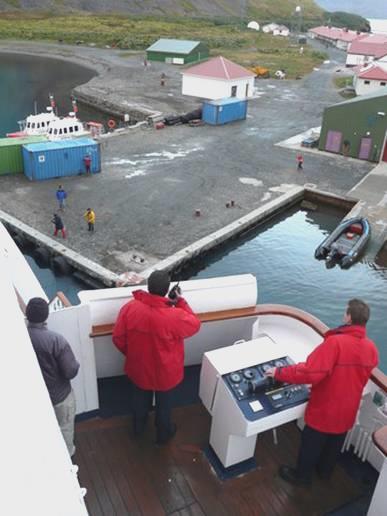
The captain steers the boat into Grytviken
We sat with Elaine and Mike for supper.
Thursday 5th March Cheers to ‘The Boss’ - Ernest Shackleton
We were awake early to see sun shining on Grytviken, but by breakfast it was snowing horizontally.
We all walked off the ship, and were taken by zodiac to the other side of the bay, to Shackleton’s grave. This was a very unreal experience! There is a small graveyard, edged by a white fence. Above on the hillside were two separate crosses – one to the 17 men from a South African ship which sank in 1998, and the other to a lone sailor. A small stream cascaded down the hillside, and at the bottom were a few baby fur seals, and one or two penguins – gentoo and King.
We all congregated near the grave, while Laurie gave a short speech about Shackleton ‘The Boss’, and we all drank to his memory – in rum, or ginger ale. It felt really moving to be here, in this idyllic location, remembering a great man. He had been buried there on 5thMarch 1922 – 87 years ago today.
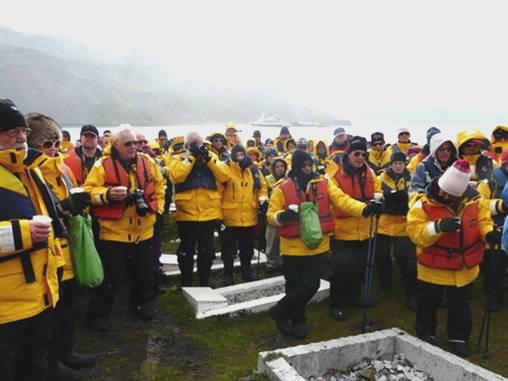
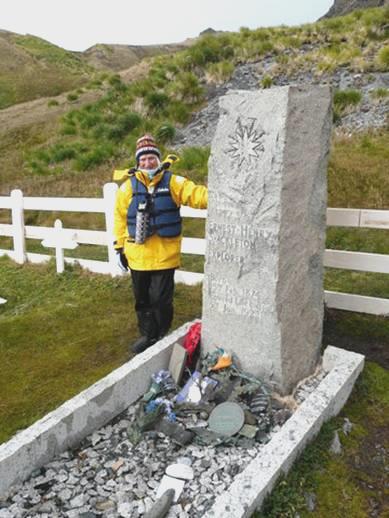
Cheers to Shackleton, ‘The Boss’, who had died here of a heart attack on a return visit to Antarctica
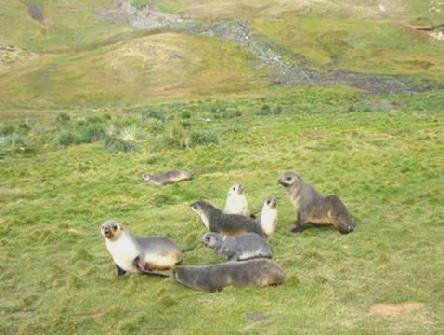
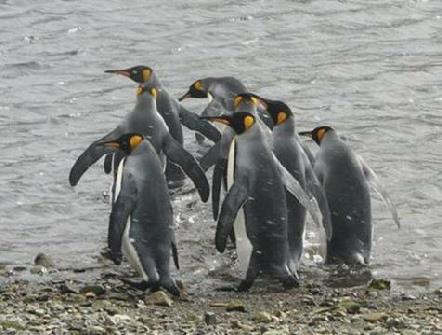
Fur seals and King penguins play nearby
We walked on around the bay to the former whaling station. We made for the little white Norwegian church – which is still used occasionally. It was very simple inside, with lots of plaques and markers to Shackleton, and also one to Frank Wilde. We climbed the stairs and rang the bell.
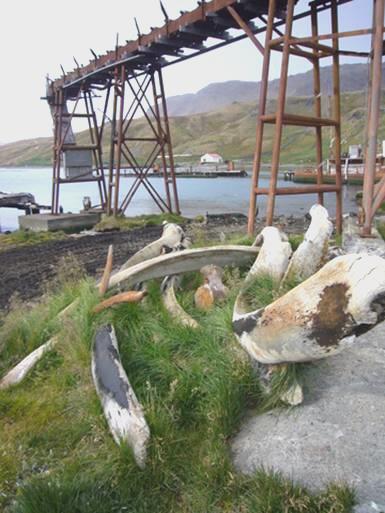
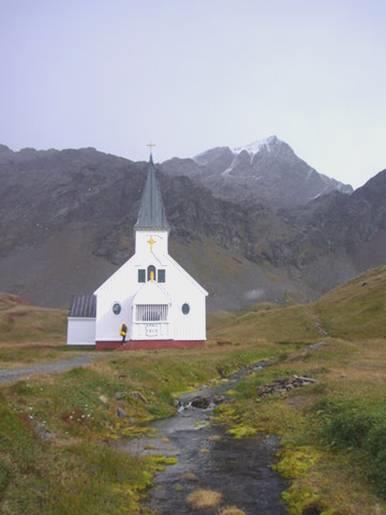
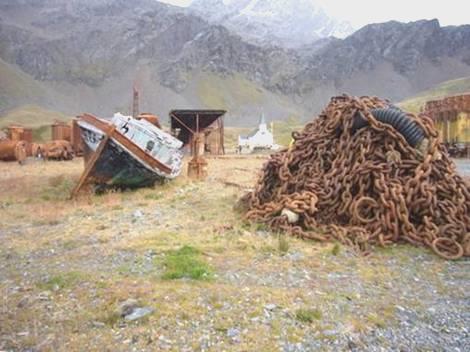
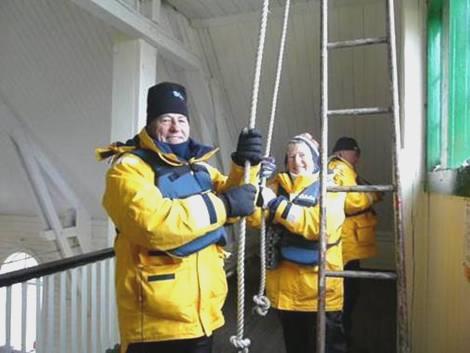
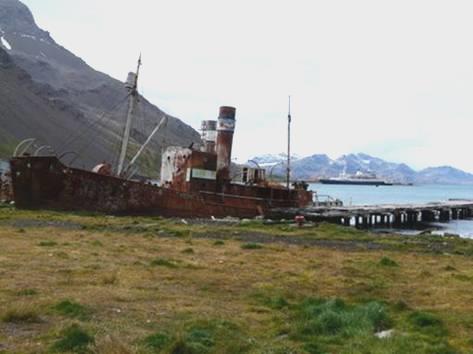
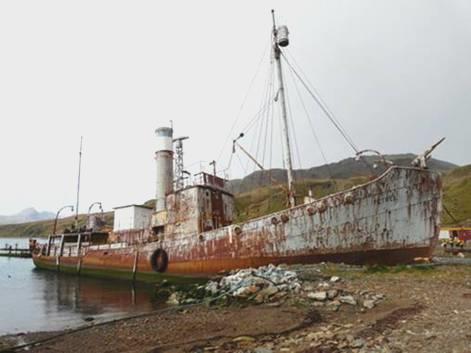
Views of the former whaling station at Grytviken
We walked on to the museum. There were information markers along the way, describing the use of the buildings when they were part of the station.
The museum was astounding. There was so much in it, it would have done credit to a large town, but here it was, miles from anywhere. There was information on the history of South Georgia, plus wildlife, whalers and much more. A new exhibit had a life size model of the James Caird – the small boat that Shackleton and the others had come across 800 miles of rough ocean to South Georgia in.
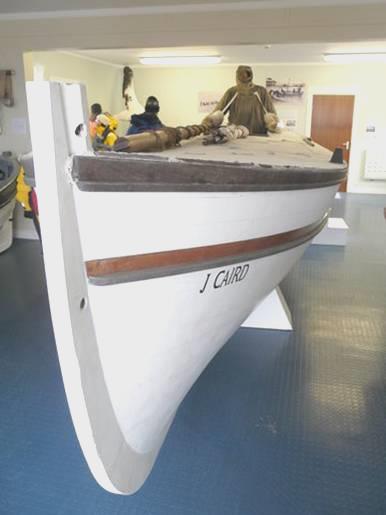
The James Caird
There was a well stocked gift shop, which also acted as a Post Office, so we sent a postcard home.
We walked on around the bay, back to the ship. The lighting was beautiful. Antarctic terns dived for fish, and a light mantled sooty albatross zoomed overhead. A really memorable morning!
We now moved on to Stromness Bay. It was the whaling station at Stromness that Shackleton arrived at after his epic journey across the island. The plan was for people to walk the last part of this trail, in reverse, to Fortuna Bay. We had deliberated, as we knew that the walk was tough, and Laurie had emphasised that nobody was to try it if they weren’t able to manage it, as there was no turning back once started – the boat was moving on to Fortuna Bay.
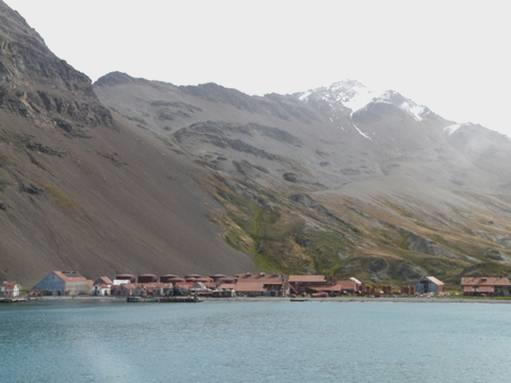
Stromness – the whaling station that Shackleton had arrived at after crossing South Georgia
We were on deck, watching our arrival at Stromness, and enjoying seeing the seals swimming along beside us. We had first travelled to the end of the bay, to pick up 4 scientists who had been working on seals, at Husvik.
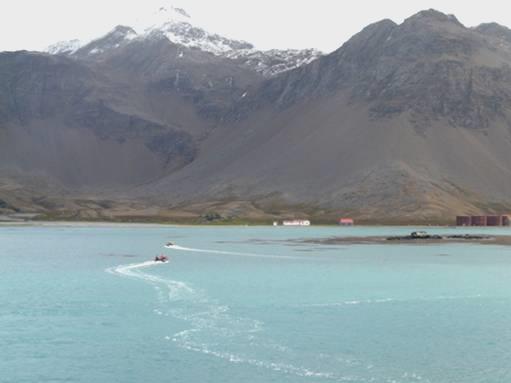
Zodiacs go to pick up 4 scientists from Husvik
The wind had now got up, and Laurie made the reluctant announcement that we wouldn’t be able to let the people off for the walk. Although sorry for them, we were glad for ourselves, as it solved the problem! At least we had seen Stromness, and imagined Shackleton and the other 2 men looking down from the pass and seeing the whaling station.
The place was now sadly derelict, as was Leith Harbour, a bit further on.
The boat moved on to Fortuna Bay, the weather becoming very stormy looking, but by the time we had reached Fortuna Bay, it was calm again, and we were able to land.
This was another magical time. There were king penguins and baby fur seals scattered along the beach. We were told that there was a large colony of King penguins further on, and wondered if it was worth the long walk, as there were so many here. We walked on, with huge, stark, snow streaked peaks all around. There were ponds, streams, waterfalls and glaciers. Baby seals played in the ponds and streams, penguins strutted about in their comical way.
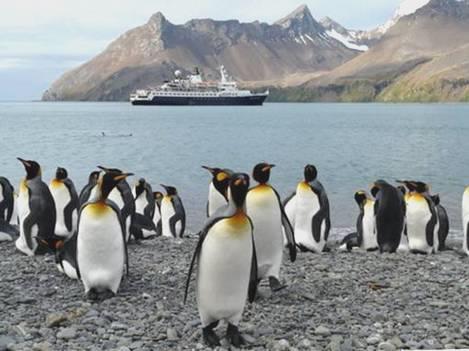
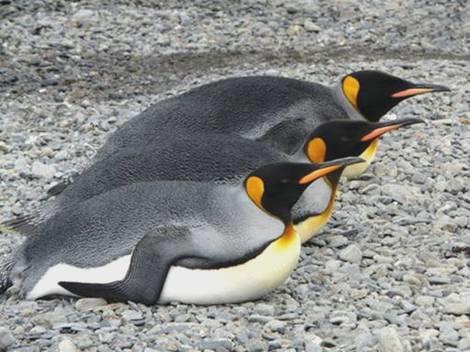
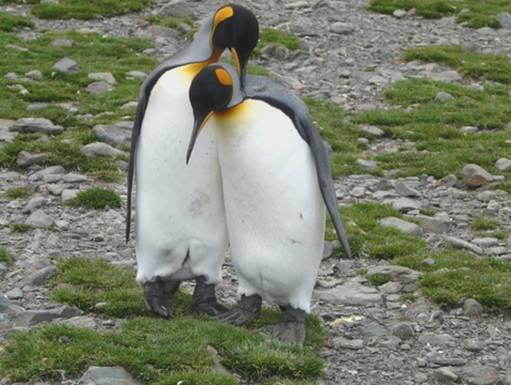
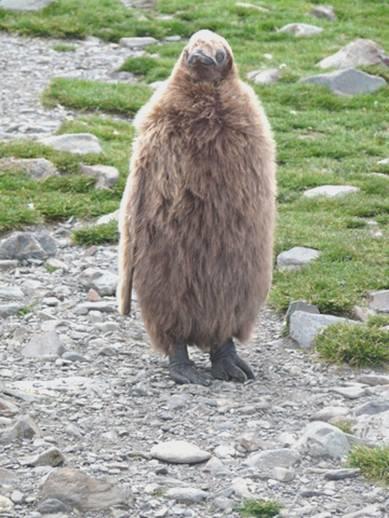
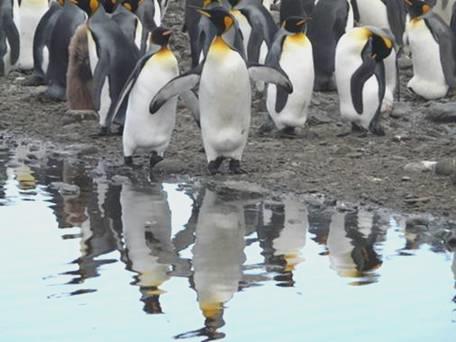
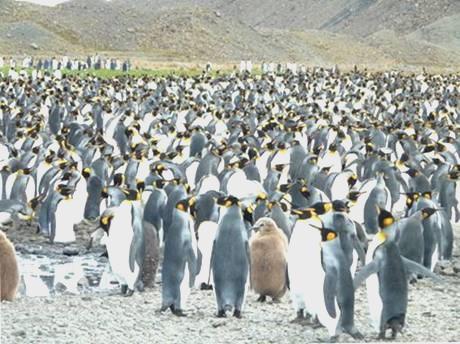
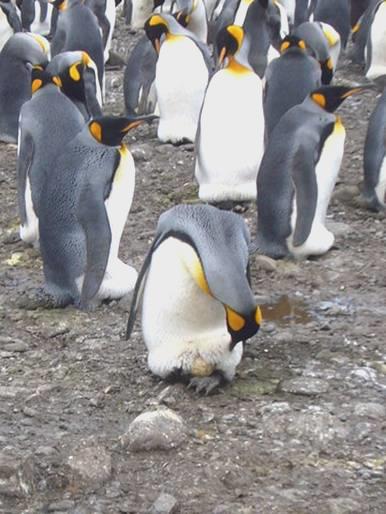
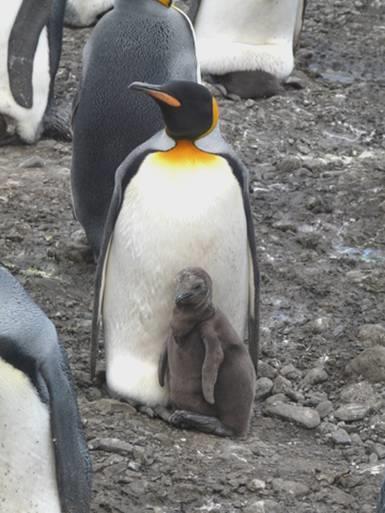
Masses more King penguins – from egg to baby to full grown, Fortuna Bay
When we finally reached the colony, we knew why we had come. We were engulfed in the sight, sound and smell of thousands of penguins, stretching back as far as the eye could see, almost to the Konig Glacier. We saw adult penguins, tiny baby penguins hiding in their parents fur, larger babies wanting to be fed, and really large babies with their shaggy brown fur. We saw young penguins in various stages of moulting, we saw parents nursing their egg, we even saw two penguins mating. We heard the buzzing sound of the adults, like blowing through a comb and tissue, and the little squeak of the young ones. In the distance, a whole herd of reindeer charged along the beach.
It was such a privilege to be in this situation and we were reluctant to leave. We tore ourselves away, as we had to walk all the way back along the pebbly beach to the place where the zodiacs would take us back to the ship. It had been another fantastic visit. Shackleton had traversed a bit of the bay on his mighty trek, but I don’t think that the beauty of it would have meant much to him at that exhausting time.
Back on board, Laurie told us of tomorrow’s plan to visit Prion Island. We are lucky to be visiting the island – home to Wandering albatrosses and South Georgia pipits – as not every ship can land there. However, it means a very early start, but as we will be almost the last group to go, it will be slightly later for us.
Friday March 6th A disappointingly rough day at sea
Well, we were woken early, but sadly our landing wasn’t to be. The sea was too rough to make any landings, either at Prion Island or at Salisbury Plain. We had hoped to make a landing at Right Whale bay, but with the seas so rough, we could make no more landings on South Georgia at all, so had to head out towards the Falkland Islands.
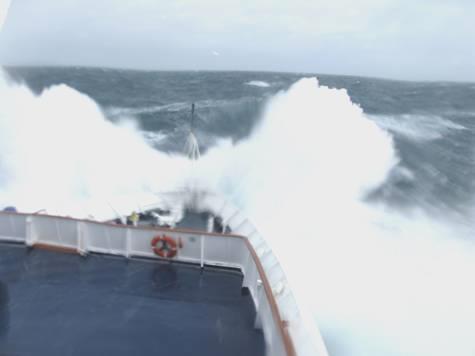
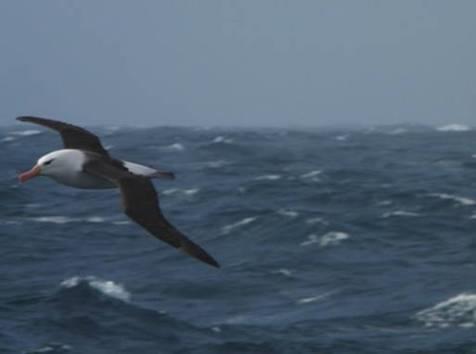
I spent some time on the bridge, watching the waves crash over it, and the albatrosses still skimming across the waves.
And that is how the day went on! Laurie gave a talk on glaciers. He showed an example of an erratic rock in Alberta. I thought that I recognised it as one we had seen south of Calgary, and sure enough it was!
Victoria gave a talk on the Antarctic Treaty, and still the waves continued to crash over us, and still the albatrosses flew alongside the ship.
The ship had been all battened down, so it made it feel dark and claustrophobic in the lounge. By the end of the day, Adrian didn’t feel much like eating, so I just brought a salad down to our cabin. We hope for calmer weather tomorrow.
Saturday 7th March Shag Rocks, then calmer waters
Well, the night certainly wasn’t calm – water thudding against our window often woke us!
At 6.45 am, Laurie announced that we were approaching Shag Rocks – a group of pointed rocks jutting out of the sea – the only thing for hundreds of miles. Their name suggests the many shags (cormorants) which frequent the rocks, and we could see several flying around. Also we saw a great many albatrosses of all sorts, and we spent a lot of time on deck watching them. It was particularly exciting to see the huge white wandering albatrosses.
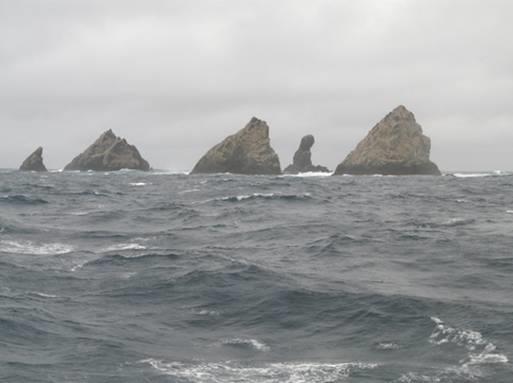
Shag Rocks in a stormy sea
While on deck looking at Shag Rocks, a little petrel landed by my feet.
We had a talk on climate change by Wolfgang, then Peter told us of the work that he has been involved in, rescuing seals which have become entangled in fishermen’s ropes and nets.
The boat continued to roll, but the weather brightened, and there was some blue sky, but later it turned to rain. At one time, there was a ship on the horizon – a rare sight.
Laurie gave a short talk on the poles and auroras and then later we had a talk by two of our ‘hitch hiking’ scientists Felik and Lars. They talked of the elephant seals that they have been studying, but I couldn’t share their love of them. We had spoken to two sisters on our ship who now lived in Banbury, but had lived (and taught) in Newbury.
We sat for supper with Sandra from Ripon, and her friend Melanie.
When we walked around the deck, we saw the large moon, and Orion.
Laurie called a meeting, and told us of the hoped for plan of our Falkland Island visit. Because the ship had been travelling so slowly during the high winds, it had been doubtful if we would land at all. Now it was hoped that we would land at Stanley, on 9th March, and hopefully two sites on the next day.
Sunday 8th March More lectures as we head for the Falkland Islands
It was good to wake to a calmer sea. We sat with Sandra and Melanie for breakfast before going to the morning lectures. They were both deep – first Wolfgang, who continued his lecture on climate change, but this time, relating it to the people of the Arctic who he had visited. It was an amazing and sad fact that the modern world problems are affecting these people too.
He showed us photos of people in Siberia and far northern Canada, whose way of life has completely changed, and modern problems like alcohol and drug use have affected them too – and even suicides. Wolfgang loved these far north places, but I wouldn’t have liked to be in the area where the mosquitoes hung in constant clouds and children were dressed in reindeer skin clothing to cover themselves.
Victoria’s talk was on the history of the Falkland Islands. The stark statistics of the war in 1982, and the ongoing effects of it made sad listening. It was good to go on deck afterwards to see a petrel swooping by.
In the afternoon, Laurie gave a presentation about his journey to the North Pole – skiing. He has also skied to the South Pole. He showed some photos of his climbing exploits too – climbing Mont Blanc, and also of his running – he has run 70 marathons! As well as that, he partakes in 24 hour runs! No wonder he goes off on tough walks whenever we land!
The day had become really pleasant – calm seas and blue sky. Standing on the deck of the ship, we could look out to see albatrosses and petrels gliding along.
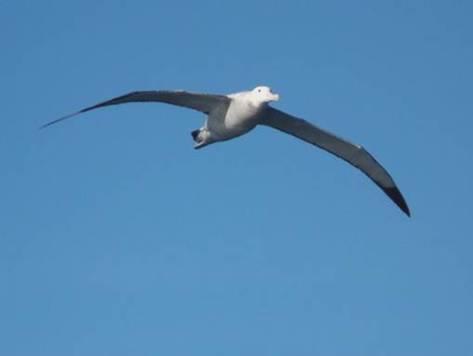
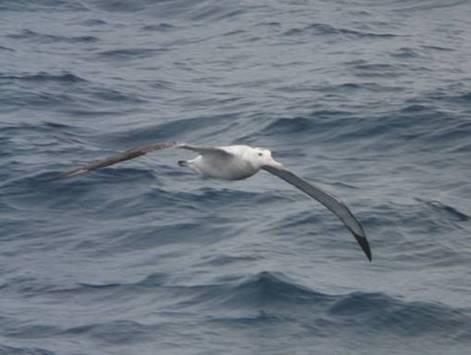
It was such a joy to look out of our cabin window and see a bird swoop by.
Later in the afternoon, the two other scientists – Christian and Kit – gave a talk on their work, which was mostly in the arctic, based at Svarnbard. Both had spent many years studying wildlife there, although they didn’t look old enough! Kit (a lady), was tall and slim with long fair hair.
It had been a long day of lectures, and finished with information on our proposed landing at Stanley, in the Falkland Islands, tomorrow.
We sat for supper with John and Nina, who have made several Antarctic trips, and another American couple, Martin and Connie, who had visited the South Pole, and spent 8 days camping at base camp, and also Suzanne, from Ontario.
Monday 9th March Stanley, Falkland Islands
It was foggy when we woke up. Birdie gave a talk on the birds of the Falkland Isles, and then the sun came out as we approached Stanley, and we had a glorious day. Blue eyed shags followed the boat as we approached The Narrows, into the calm waters of Stanley harbour.
There were two huge cruise ships around, as we had known. Our ship came in to dock, and then we could all go ashore. We walked down the gang plank wearing shoes, instead of the wellies which we have usually worn.
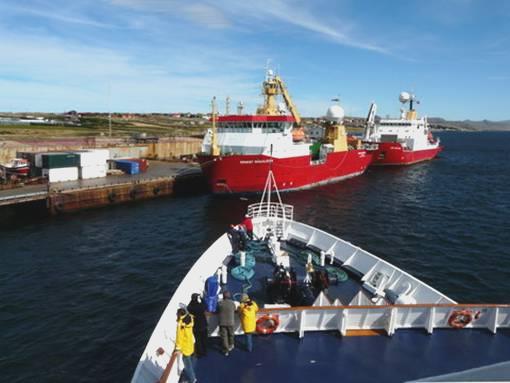
Arriving at Stanley, Falkland Islands, with the Ernest Shackleton survey ship alongside
We had to wait a while for a bus to transport us to nearby Gypsy Cove. Some people walked, but there was plenty more walking to do today.
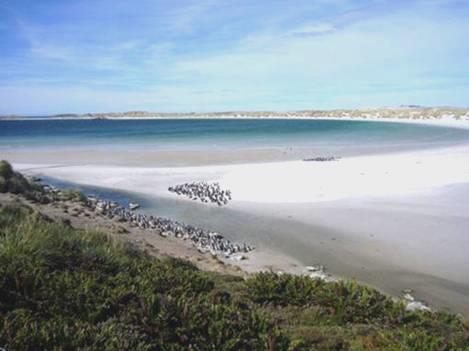
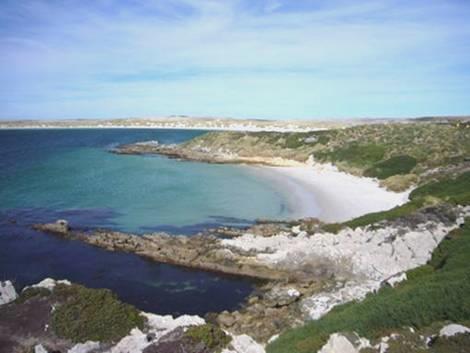
Lovely Gypsy Cove, with the colonies of Magellanic penguins
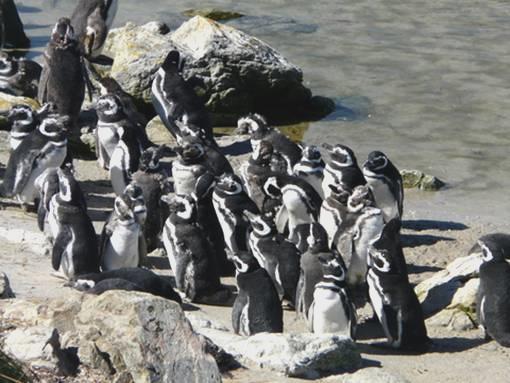
I hadn’t expected the Falkland Islands to be so beautiful. The blue sky helped, of course. We got off the bus at an area of grass covered headlands, with wonderful white beaches – sadly still off limits because of possible land mines. Magellanic penguins frequented the beaches. There were no trees, just some low growing shrubs. We walked around the area, enjoying the views in all directions.
We got on to the bus again, which took us back into Stanley. It is a little low-key town of single storied buildings with really bright roofs – most a vivid red, but some sky blue or green.
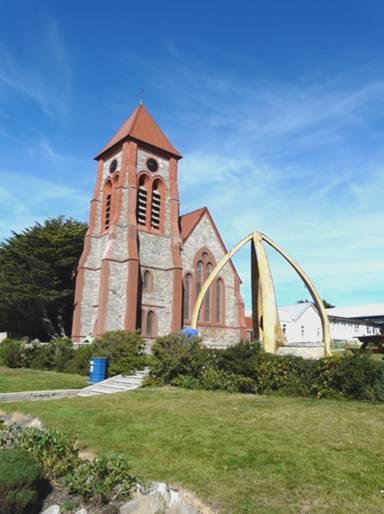
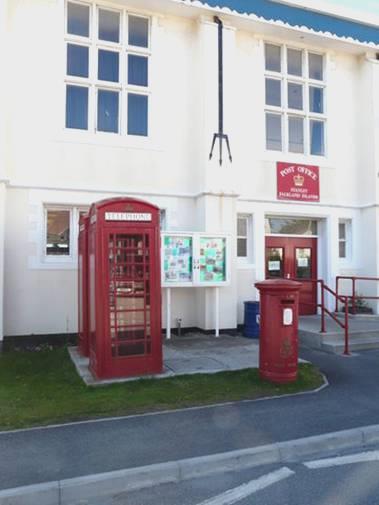
Stanley Cathedral with whalebones outside – like its twin town Whitby – and ‘English’ post and pillar boxes
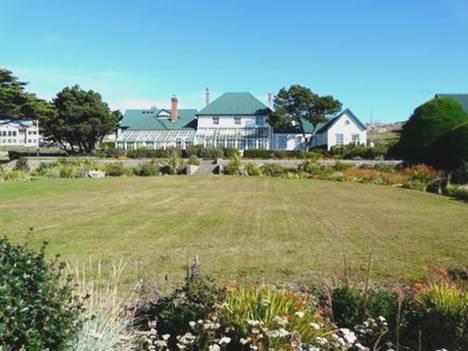
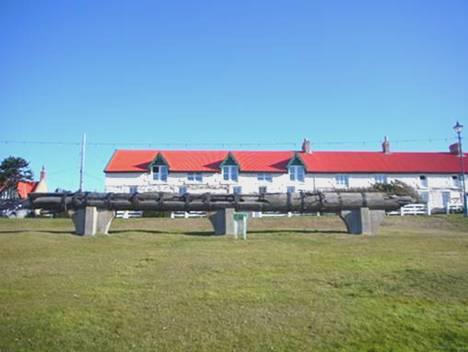
The Governors House, Stanley The mizzen mast of the SS Great Britain
We were annoyed at the number of cruise ship people around, but these got less as time went on and they went back to their ships. We wandered along the front, looking into one or two gift shops, and also into the cathedral, which has a large whale bone arch outside. The town is twinned with Whitby, which seems quite fitting.
It was a much longer walk than we’d realised to get to the museum, but we did get there. It seemed funny to hear locals sounding just like southern English people so far from home!
We passed a memorial to the Falklands conflict, and also to a battle here during World War 1. There were several wrecks of ships off shore – many boats had limped in here after taking a bashing while rounding Cape Horn.
SS Great Britain had spent some time here, before finally being sent back to England, but the mizzen mast took pride of place along the front.
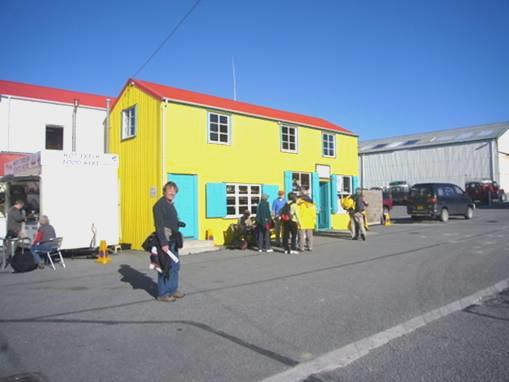
One of Stanley’s brightly coloured houses
We walked back right by the water’s edge to the centre of town, where we hung around for the bus to take us back to the ship. The ship set off again soon after 6.00pm, with everyone on deck to watch the passage through The Narrows. We intend sailing to the western end of the Falklands to land at two different island sites tomorrow.
We sat for supper with Australian geologist Graham, but I had to go and photograph the lovely sunset, while the almost full moon rose on the other side of the ship.
We had a meeting explaining about tomorrow’s itinerary, and other matters, as we are nearing the end of the trip.
Tuesday 10th March An idyllic last day of landings
We had a 6.00am call from Laurie. This morning it was buffet breakfast only, as we would be having ‘brunch’ after our first landing.
The weather was really mild, and the skies clear, but the waves meant that it was a rough crossing in the zodiacs to Saunders Island. We could get a small idea of what it had been like for Shackleton and his team in the James Caird, when they were continually drenched by water – we had been listening to that part of the story yesterday. Waves drenched us, but at least we had waterproof clothing, and a means of drying them afterwards.
Saunders Island was absolute paradise! A narrow sandy isthmus connected two grassy hills. The ground was completely covered in penguin footprints. There were groups of gentoo penguins everywhere, and also groups of Magellanic penguins. These ran along like a group of scared nuns!
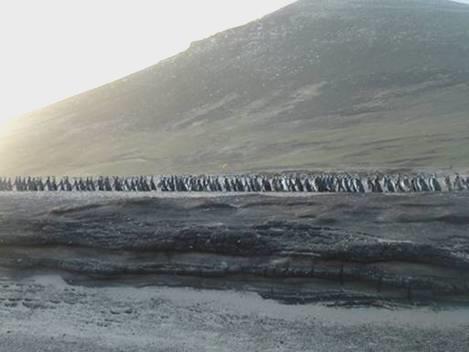
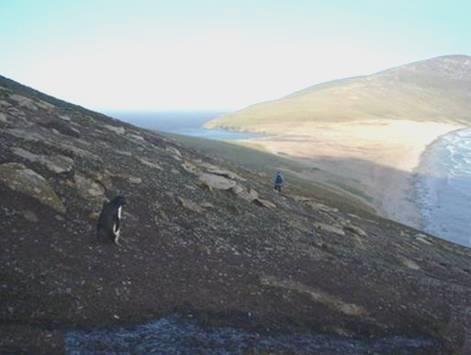
Magellanic penguins on Saunders Island with its sandy isthmus
Towards the bottom of one of the slopes was the huge skeleton of a whale.
We ascended the grassy slope, and walked along until we came to another delight – a colony of rockhopper penguins. These are aptly named, as they do ‘hop’ over the rocks. They resemble macaroni penguins, with little yellow tufts on their heads. We watched them for a long time, then Adrian continued towards a nesting site of black browed albatrosses. I thought that the going looked too steep for me – you had to walk along the sloping hillside, which ended at the sea. Eventually it got the better of me, and I set off, meeting Adrian and coming to another group of albatrosses.
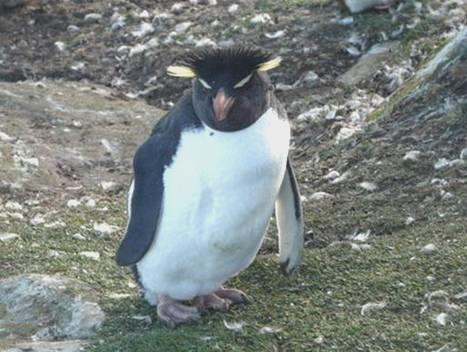
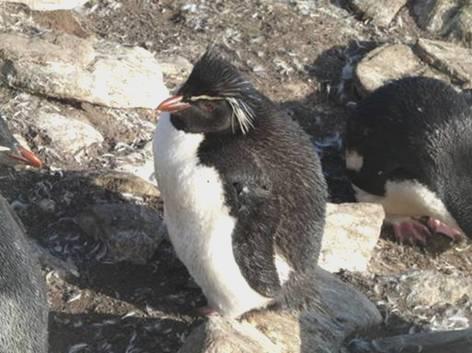
Comical rockhopper penguins in their colony above the sea
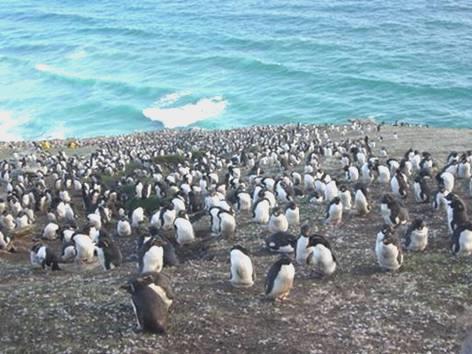
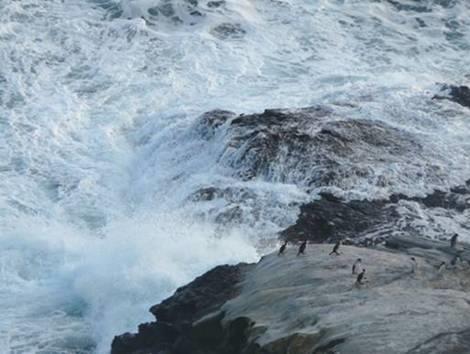
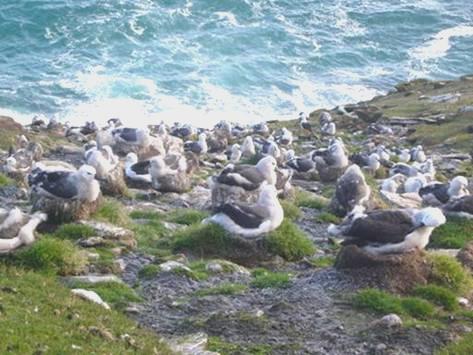
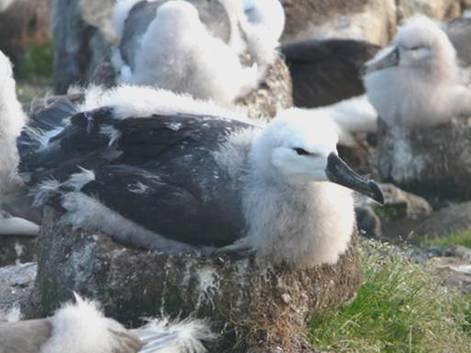
Black browed albatrosses on their nests, with almost fullgrown young
It was a superb sight to see these almost grown young birds sitting on raised nests just above the sea. There were some adults about too. We watched for some time, but were called from this idyll, as Laurie was concerned about the rough sea, so we had to make our way back towards the beach. On doing so, we passed some King penguins, so four kinds of penguin in one area. Also there were many other birds – caracaras, kelp geese and dolphin gulls. With the turquoise sea and the powder blue sky it was as nice as could be!
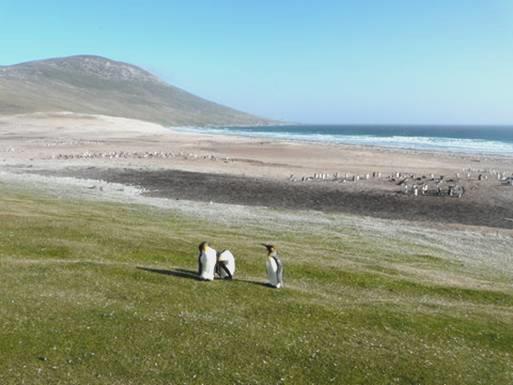
More penguins as we walk back to the shore
The ride back on the zodiac was pretty wet – waves washed over us as we set off. Soon after we reached the ship, it was time for our ‘champagne brunch’. We did actually have a glass of bubbly to go with our roast turkey meal, plus lots of extras. We sat with Mike and Elaine, and afterwards went to the back of the boat, where we sat in the sun for a short while.
We were hoping that it wouldn’t be too rough for our last landing – at West Point Island. We were in luck – the sea was quite smooth in the bay where the ship anchored. Our last landing was a memorable one. West Point Island is privately owned, and seems like heaven! The home of Roddy and Lily Napier was hidden until we landed. We walked up a hillside, and then across the grassy island to the other side. The weather was really warm, although the wind was strong.
After walking for half an hour or so, we came to the far side of the island. This was again a nesting place for black browed albatrosses and rockhopper penguins.
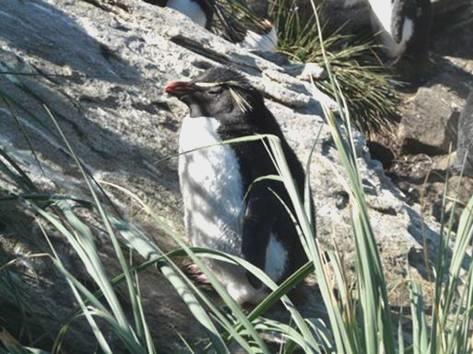
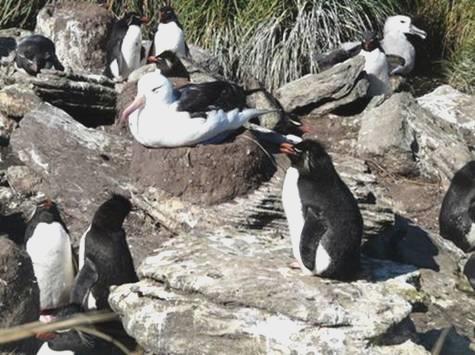
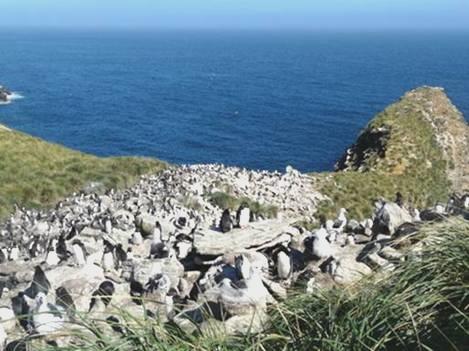
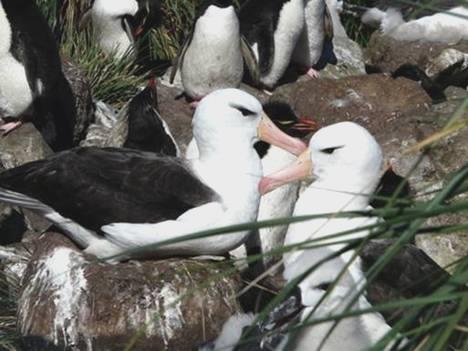
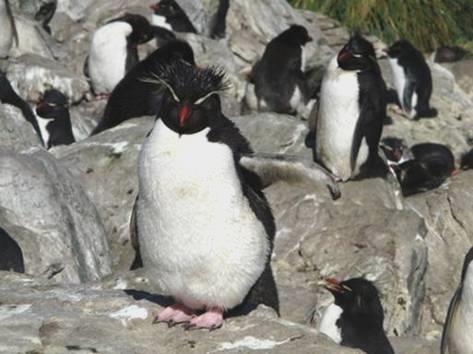
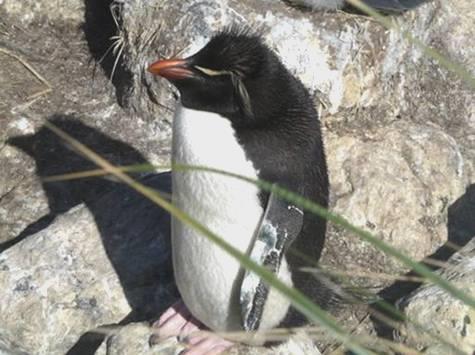
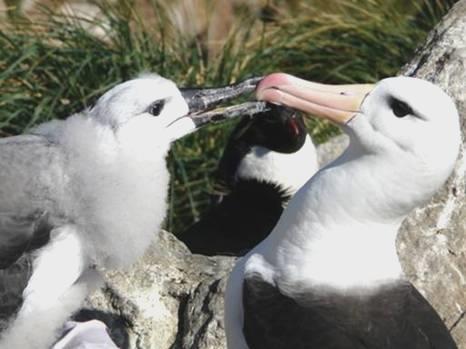
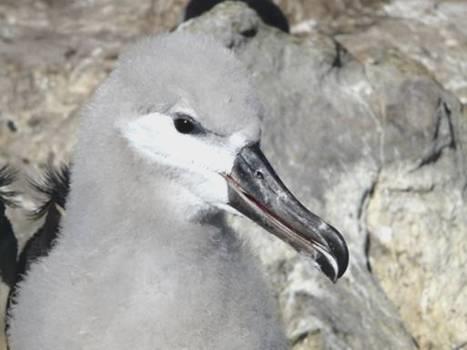
Black browed albatrosses and rockhopper penguins on lovely West Point Island, Falklands
To view them, we had to climb over a lot of high tussocks, which were covered in the long tussock grass. It was a delightful view, with the sea far below, and the albatrosses and penguins all mixed in together. The albatross young were full grown and were in various stages of moulting, which made them look as if they had fur coats. The sky was thick with birds flying – it looked like snow.
Having had our fill of watching them, we walked back (some rode in landrovers) to the house, near the landing stage. An extra special treat was that ‘tea’ was laid on – a cup of tea, and all sorts of teatime goodies. Being such wonderful weather, we sat in the garden to enjoy this. A caracara tried to pinch people’s food, although it didn’t really want it.
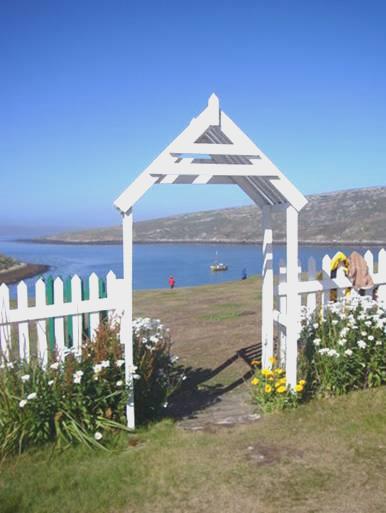
From the island owners garden
The garden had a white entrance arch with a view through to the sea below.
The garden was more English than England – marigolds, lupins, honeysuckle, marguerites bloomed. We were reluctant to leave the island – it seemed like heaven on earth. What a special place for our last landing.
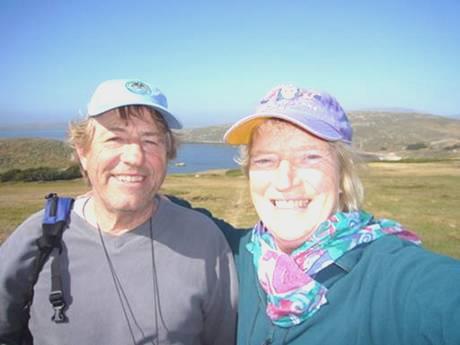
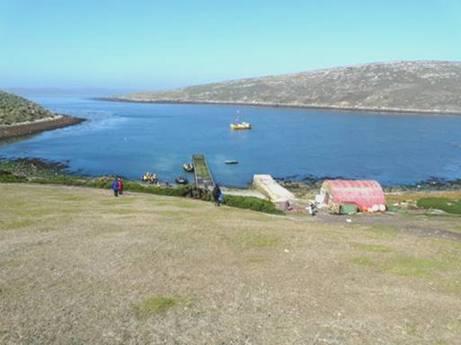
We walk back across West Point Island for our last zodiac journey back to the ship
We were back at the ship by mid afternoon, and soon set sail for Ushuaia, which we should reach early on Thursday morning. I went on deck to enjoy the view as we left the Falklands, which had done us so well. There were birds flying everywhere, and it was hard to think that this time of looking out to see albatrosses was nearly ended.
While I was on deck, there was an announcement that there would be a group photo taken on the bow of the ship. Everybody made their way there, and we all smiled in the warm sunshine!
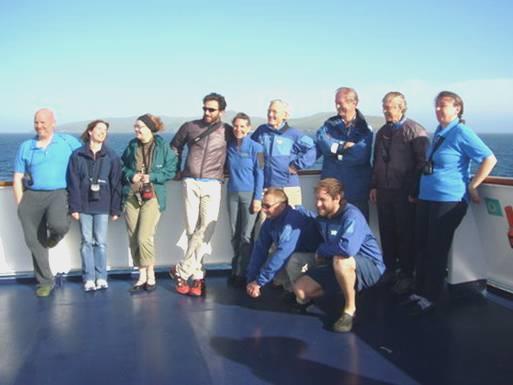
The staff
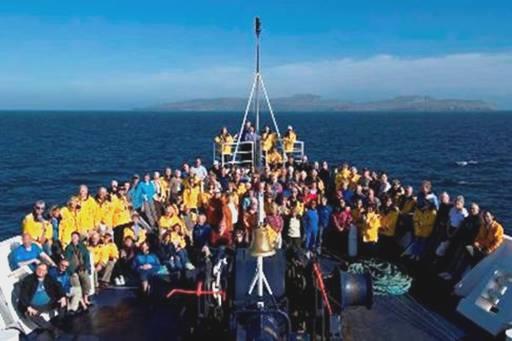
The whole lot!
We had seen the blow of a whale just before the photo, but soon afterwards, the captain announced that there were more whales. He followed them for some time, and we had really good sightings of several fin whales.
We sat with Wolfgang and Gun-Brit the doctor for supper, and enjoyed a glass of their red wine with them. Afterwards we watched a short film made in 1929 of a ship ‘rounding Cape Horn’, with a commentary made in the 80s.
Before coming back to our cabin to listen to the last of the Shackleton Endurance story, we walked round the deck. There was a magical full moon shining, lighting up the horizon.
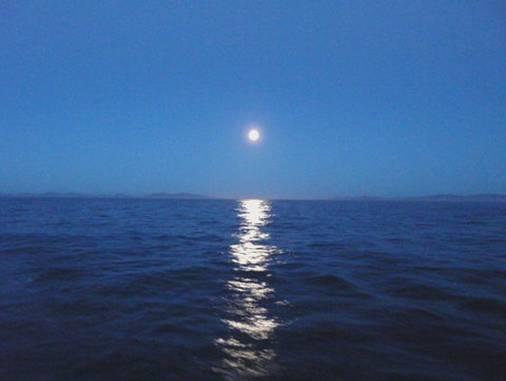
Wednesday 11th March Last day on the ship
It was a lovely morning, and people seemed to enjoy the fact that we didn’t have to get up early. We sat with Merilee and Peter for breakfast, but this was interrupted as a royal albatross was sighted. As well as that, Northern and Southern giant petrels were following the ship, and along with other albatrosses were wonderful to watch.
Birdie gave a talk on bird migration, and then Peter gave a presentation of the time that the ship he was on was beset in ice in 1985.
After lunch we had a ‘disembarkation briefing’, followed by farewell from all the staff, and a thanks to them from South African Peter and Francis on behalf of the passengers. A Dutch woman, Else, got us all singing a ditty about the trip, to the tune of ‘Yankee Doodle’, and accompanied by Zach on his guitar.
Alex then showed us the final selection of photos of the trip, which passengers had submitted. I was pleased to see my photo of a penguin ‘pooing’, and one of Adrian’s of penguins on their stomachs. He showed us a bit that he had put together of the ‘polar plunging’. All in all, an entertaining and quite moving time.
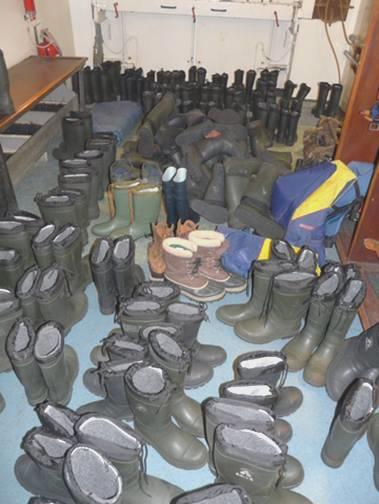
All the wellies collected up
Whenever we went on deck, we had glorious views, with land of extreme South America, and with birds flying around. The sea was really calm.
At 6.30 we met for the ‘captain’s champagne toast’. Our Faeroes Island Captain Idar talked through our trip, and made us realise that there were many times when we hadn’t been aware of the difficulties that faced the crew with regard to landings and anchoring. He chatted on a bit about his life, in his quiet, dry way, making us laugh when he said that he and his sister were both born in September, as fishermen came home for Christmas.
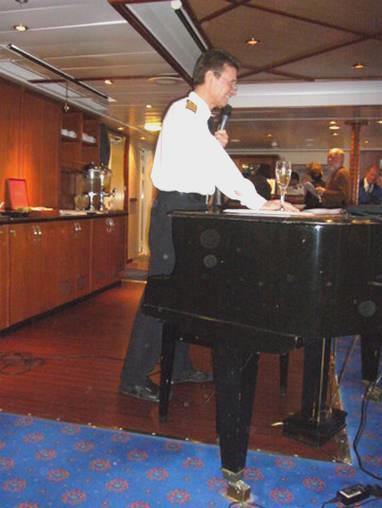
Captain Idar Petersen
The farewell dinner followed, and we sat with two people that we hadn’t spoken to before, Jack and Michelle who live in Homer, Alaska. Carline introduced all the domestic staff, some, like the chefs, who we hadn’t really seen.
We’d hoped to have a bit of a sing song afterwards, but most people seemed to have disappeared early to bed, although we are the ones who are leaving first tomorrow for the airport. Francis did play a couple of tunes on the piano, and a small group of us did sing a few songs, which was nice, but it didn’t really get going. We chatted a bit to Sandra and Melanie, and then walked around the deck, seeing the full moon and the Southern Cross before we came in.
Antarctica
The whole beach was covered in hundreds of King penguins. We have loved each penguin in turn, but these really are the most magnificent to look at. The gold colour on their heads and necks makes them stand out from the others. There were gentoo penguins on the beach too. I had thought them really pretty, but they looked shabby in comparison. I suppose the thing with penguins is that you can so relate their stance and movement to humans. With wings outstretched, they look like a little child wanting to hold your hand! The groups of them made a humming noise, like someone blowing though a comb.















